

Professional BoatBuilder Magazine
The efficiency of a foiling powercat.
By Dieter Loibner , Mar 13, 2020

Matanzas Watercraft’s founder, Jan Brandt, in his office with a rendering on the wall and the prototype of the Matanzas 29 foiling powercat peeking through the shop door.
Motivated by his own boating experience and America’s Cup foiling technology, a startup builder launches the Matanzas 29, a new breed of powercat for fishing and cruising.
Wherever Jan Brandt goes, a constant companion since his childhood days in Hamburg, Germany, is his passion for watersports. Competitive swimming, surfing, waterskiing, fishing, scuba diving, sailing, you name it, he’s done it—and still does. No surprise, then, that Brandt is also deeply involved with boats, not just using them but also designing and building them. His latest project is a 29 ‘ (8.8m) foil-assisted planing cruising power catamaran designed for twin outboards from 60 hp to 90 hp. Last fall, construction was far advanced as Brandt prepped for finishing, outfitting, and getting the boat ready for sea trials off St. Augustine, Florida, where he set up shop as Matanzas Watercraft LLC.
Inspired by the Sliver 29, a catamaran designed for fishing and weekending, built by SuperCat in South Africa , Brandt defined specifications that suited his own use patterns and his home port in St. Augustine. “I am looking to build a day-use cat for fishing offshore waters but also capable enough to make the run to Bimini and Abacos on a calm summer morning,” his design brief reads. Also on the list: sufficient load capacity for three to four people for day use and provisions for a couple to cruise for a few days; a range of 200 nm on one tank; and a cruising speed of 20 to 25 knots. Brandt: “I need to deal with a 2–3 ‘ [0.6m–0.9m] chop and Atlantic Ocean swells. While an open cockpit with center console and hardtop is totally sufficient, a head and dry storage for gear with maybe just enough space for a bunk for two would be awesome.” Since crab or lobster pot buoys are not much of a concern in Florida, Brandt explored the idea of foil assist to reduce power requirements and improve seakeeping. However, he was adamant about the ability to safely beach the cat and limit overall beam to 9.1 ‘ (3m) to keep the trailering permits manageable.

The Matanzas 29 plywood/carbon prototype has wave-piercing bows with a positive rake and peaked decks that shed water quickly. The bows’ fine entry flattens out toward the stern to encourage planing, even when operating without foils.
He did some preliminary design work himself, but when the project got serious he consulted with Bieker Boats of Anacortes, Washington. Principal Paul Bieker served as the lead designer of the Oracle America ’s Cup sailing team and was instrumental in developing the outrageously fast 72 ‘ (22m) foiling catamarans that ushered in a foiling revolution following the 2013 Cup on San Francisco Bay. Bieker now applies variations of the foiling concept to pleasure craft, most recently with an innovative 53 ‘ (16m) sailing catamaran intended for racing and weekend cruising (see “ Fledging the Eagle ,” Professional BoatBuilder No. 182) and now with Brandt’s foiling powercat.
The basic idea behind foiling is maximizing efficiency while curbing the need for big engines, a notion that has yet to find footing with production boatbuilders. Brandt: “I’m not interested in boats over 25 ‘ [7.6 m] running 250- or 300-hp twin motors. I’ve been doodling around for a year on the idea, spent more time on the hullform, and when I decided to pull the trigger on building one, that’s when I contacted Paul to help me finalize the design, incorporate some of the design criteria and requirements, and make it work from an engineering perspective. He helped crystallize the hull shape and get the details fleshed out.”
Foiling Tech Trickle-Down
A former racing sailor who campaigned a Mini 650, Brandt met Bieker in 2010 while cruising the waters of Puget Sound. He ran his own environmental consulting firm in Seattle and also took up boatbuilding. First came stitch-and-glue kayaks, but soon he graduated to the PT Skiff, an 18′ (5.5m) kit boat by Port Townsend Watercraft designed by Bieker and Russell Brown. With Brown’s encouragement Brandt designed and built the cedar-strip carbon composite Syhoya , a handsome 21 ‘ (6.4m) weekend cruiser powered by a 60-hp Evinrude E-Tec outboard for cruising Puget Sound and beyond.

Previously, Brandt designed and built Syhoya, a 21’ (6.4m) weekender with a 60-hp outboard for cruising the coastal waters of the Pacific Northwest.
In Brandt’s painstakingly clean and organized workshop a 10-minute drive from his house in St. Augustine Beach, Bieker’s plans laid out on the workbench and the prototype of the Matanzas 29 under construction showed how personal predilection, boating experience, and exposure to innovative design ideas informed his choices. For a simple boat that aims to maximize efficiency and minimize power requirements, the design process was complicated. Some salient features, like the combination of planing hulls with wave-piercing bows and the foil arrangement most commonly associated with fast sailing cats, seem a bit counterintuitive at first, but Brandt explained the underlying thinking.
He wanted to minimize the fatigue of the acceleration/deceleration forces when running the steep chop of St. Augustine Inlet during an outgoing tide, “letting the bows do the work,” rather than endure slamming, Brandt explained. “That’s when we combined the wave-piercing hulls with the foil assist in order to get away from larger engines while still being able to carry the displacement we need, all the things we added that were part of my criteria—the fish boxes and the scuba gear. All that weighs quite a bit, [but we wanted] to manage that with reasonably small motors. That’s how we got to wave-piercing bows and the foils.” Load-carrying capacity, especially at speed, is another reason he decided against displacement hulls.

Passengers can ride on the main deck, under the hardtop, or on the “rumble seat” forward.
Why plywood/composite instead of carbon-reinforced plastic construction, which would have further minimized weight? Brandt reasoned it was less complex and costly for a prototype that has to establish proof of concept and test the nascent market for foiling powerboats. Tooling up for a production run is his goal. The thin plywood—okoume 6mm/1⁄4 “ for the topsides, 9mm/0.35 “ for the bottom—is sheathed in E-glass, a laminate schedule of 200-g (5.9-oz) and 300-g (8.95-oz) layers inside and out. Turn Point Design in Port Townsend cut the kit, based on design files it received from Bieker Boats. “That worked perfectly. We have had zero issues with the wood fit,” Brandt recalled. “Every puzzle joint fit the first time.” For the foam-core portions of the boat, he used 20mm (0.79 “ ) Divinycell H80 sandwiched between multiple layers of regular-modulus carbon woven roving of 5.9 oz 0°/90°, and 2×2 twill weave of the same weight, which conforms well to complex 3D shapes. For taping and to reinforce high-load areas, Brandt applied 400 g/m2 (11.8 oz/sq yd) of 45° double biaxial carbon and 9 oz/sq yd (305 g/m2) unidirectionals.
The entire wet deck, measuring 18 ‘ x 10 ‘ (5.49m x 3.05m), was vacuum-bagged with the foam core and three layers of carbon fiber on each side, laid up in various directions. That’s a large piece to build in a compact workspace, so he tackled it first and then stored it against the wall to make room for hull construction. Florida’s warm, humid climate imposes its own demands on working with resins, which ideally are catalyzed and processed in an ambient temperature around 65°F (17°C). Brandt planned to get the big parts done during the cooler time of year, turning on the air-conditioning if necessary and starting at 3 a.m. Doing “the large areas of the hull, we had three layers of glass on the bottom, so running that over 30′ [9.14m] in one shot, even just hand layup, gets challenging, because the initial pot cures before you have the last layer on.” That’s a herculean task for one, but he had help from his wife, Tonya, and then hired some neighborhood kids to do some sanding.

This angle shows the square sterns, the cutouts for the fuel hoses and steering lines, the carbon-reinforced main deck, and the storage boxes.
In addition to all this new construction, Brandt still found opportunities to include some repurposed parts from his Mini 650, which he had raced from Newport to Bermuda and in West Coast regattas. In his stash of spare kit was an extra boom—a 3.7m (11.15 ‘ ) raw carbon tube from CST Composites that always traveled with the boat. It became the beam that holds the anchor roller and forms the front terminus of the foredeck, Brandt noted, adding that he cut and fit sections of carbon spinnaker poles to support the cat’s hardtop.
Outboards with Mustache Foils
As originally conceived, the boat was to be powered by twin 60-hp Suzuki DF 60A three-cylinder outboards. However, working with technicians at Suzuki Marine of North America , which rents shop space from him next door, Brandt opted for the four-cylinder DF 90A, which he considered a better fit for the prototype’s offshore work and for testing the custom mustache foils. Granted, the DF 90A packs 50% more power and a third more weight than a DF 60A, but it’s still modest compared to twin 300s often seen on boats of similar size.

Custom-designed carbon mustache foils on the cavitation plate will boost stern lift as their attitude is adjusted by the tilt and trim mechanisms of the outboards.
“I don’t need 55 knots; 25 is awesome. That’s fast cruising,” he declared. “Every now and then…it’s nice to be in the 30s to run home, but that’s plenty.” If it sounds extreme, Bieker wanted even less. “I think he was initially uncomfortable with the speeds I wanted, until we had a discussion about what the market expects,” Brandt laughed. “The mentality is ‘I gotta be able to go 30, gotta be able to outrun a thunderstorm. I’ve got 40 or 50 miles to the Gulf Stream, and I want to get there in reasonable time.’ Paul’s sweet spot is 15, 16 knots, because you can do that with a lot less power. To go from 16 to 22 knots is a big jump, but 16 knots is not where the market is; it’s not where the utility of the boat is. So I had to push the area of power where he was less comfortable and the threshold of where he did not want to be associated with. That was a big compromise. I credit him for coming my way.”

Outward-facing J-foils forward carry most of the displacement when deployed. Their angle of attack is manually adjustable by ±2° with a sliding bolt, and hinge pins allow the foils to fold up when not in use.
The production of the mustache foils (named after their shape) was outsourced to Chris Maas on Center Island, Washington, a former builder of custom rowing shells and International Sailing Canoes. He said he was using his 3-axis CNC router to machine molds from MDF board and construct the foils in wet layup with Pro-Set epoxy. These foils will be mounted to the cavitation plate, so any adjustment in the angle of attack comes from the outboards’ tilt and trim mechanisms. The main appendages amidships are outward-facing J-foils (similar to those on the 31 ‘ /9.45m Foiler by Enata Marine; see PBB No. 173, pages 39–40). A hinge pin at their heads allows them to fold up when not in use, while the angle of attack is adjusted manually when the boat is stopped, by slacking two bolts and sliding the hinge mechanism fore and aft for a range of ±2°.
“We lofted all the layers carefully,” Bieker said of the foil construction that was performed by Simon Miles, a carbon fiber fabricator in Port Townsend. “We came to 167 layers,” Bieker continued. “Typically we get to within 1mm of the target shape. The structural spar is solid, and toward the trailing edge there’s some hi-temp PVC foam core.” It will be done in five to six cooks at 250°F/121°C (see the sidebar below).
In foiling mode the cat will not be in “full flight” with hulls clear of the water but rather skimming along the surface. As simple and sensibly powered as the boat is, Brandt still wants the capacity to carry a payload of approximately 1,600 lbs (725 kg) for fuel (2 x 35 gal/132.5 l), water (14 gal/53 l) food, paddle, and surfboards, fishing, and scuba gear, a porta-potti, some electronics, and a small refrigerator. To cover his energy needs for starting and house loads, he’ll go with 2 x 75-Ah lead-acid batteries with 650-amp cold-cranking capacity. Two 100-watt solar panels on the hardtop and intermittent charging from the alternators when motoring should keep the lights on and the beer cold.

Deck, stern, and side views reveal the arrangement of the boat with foils deployed and folded up. Note the mustache foils mounted to the cavitation plates of the outboards to increase lift and help trim the boat.
Brandt named his company Matanzas Watercraft after the river that runs past St. Augustine, where he attended high school after emigrating from Germany with his family in the 1980s. Dating back to those days, he knows the surf spots, gnarly riptides, and choppy patches where sea breeze and ebb collide. After dialing in the new boat during sea trials, which include a trip to the Bahamas to test it as a cruising, fishing, and diving platform, he hopes this America ’s Cup–inspired concept will generate the interest that warrants a limited production run. Ideal customers, Brandt reckoned, are sailors who share his passion for water sports, value his high-tech approach to efficiency, and “don’t necessarily need the power that generally is the norm in the market.” It’s a bold bet but one that seems right for the times. “The intent is there, and we have the facilities to do it,” he added.
Dieter Loibner is editor-at-large of Professional BoatBuilder.
Cooking the Foils
While Jan Brandt of Mantanzas Watercraft was putting the finishing touches on his Matanzas 29 powercat in St. Augustine, Florida, the foils were being made at the diagonally opposite corner of the lower 48, in Port Townsend, Washington, roughly 2,500 miles (4,023 km) distant. Working inside his barn workshop that used to house a boatbuilding shop called Seven Seas, carbon fiber technician Simon Miles, 31, stood next to the carbon tool he’d built for the job. He was warming swatches of prepreg with a heat gun to help them stick to the adhesive film he had previously put on top of the cured substrate of the first cook.

Simon Miles heats the prepreg to bond it to an adhesive film he put down onto cured substrate in the foil mold.
Having worked for Oracle’s America ’s Cup team and Mad Fiber, a Seattle company that made high-end carbon racing wheels, Miles is very much at home with high-end carbon work, but this job was new territory, because it required high-temperature tooling, and he was using a new source for the intermediate-modulus prepreg required.
The tooling was built from a plug of machined medium-density fiberboard (MDF). The monolithic carbon mold is infused with Pro-Set High-Temp infusion resin using Sigmatex 660 g/m2 (19.5 oz/sq ft) of 2 x 2 twill, a ply of 200-g/m2 (5.9-oz/sq-ft) woven carbon, and two coats of Pro-Set High-Temp tooling putty against the machine-tool-face end to limit print-through of the heavy woven cloth.

Infusion of the carbon tool.
The centerpiece of the foil project is a 20 ‘ -long (6.1m) shipping container the previous owner converted into a giant oven for constructing high-end carbon fiber parts. “It has Roxul insulation and stainless walls inside,” Miles explained, “and there is a huge heater/blower unit from Electroheat.” For this project, Miles moved the container/oven into his workshop and hooked it up to three-phase power.
To help lower the cost, Miles sourced 108 yd of 190-g/m2 (5.6-oz/sq-ft) unidirectional 250 prepreg from Composite Recycling Technology Center (CRTC) in Port Angeles, Washington. The material was rejected for use in aerospace applications, hence the substantial savings. At CRTC it was stored at 0°F (–17.8°C), which is common for prepreg. Once out of the freezer it must be processed quickly, but the cool ambient temperatures of the Pacific Northwest winter (at or below 50°F/10°C) allowed Miles enough time to complete the work.

Some complexities: The foils, designed by Bieker Boats, comprise 167 layers of carbon laminate, 144 of them unidirectional 0°, the rest off-axis plies (±45°). In the lower part of the foil, the structure will include foam core (Divinycell H100 foam) and Gurit SE 84 laminates. Miles said he planned to switch to the lower-temperature prepreg so the foam does not “blow up.” At 250°F (121°C) H100 distorts, changing density and dimensions, but SE 84 cures below that threshold at a cooler 176°F (80°C). Miles said he would still precook the Divinycell to reduce the chances of expansion after the foam had been shaped. To finish, he will use woven cloth for wrapping, and SE 84 as well. Lastly, the B-side will be faired and sanded.
Miles estimated total construction time would run eight weeks for a springtime delivery.
Dieter Loibner
Read more Companies , Construction , Design articles

- Departures: Carl Chamberlin
Passionate, competent, considerate, modest, and thoughtful is how designer and boatbuilder Carl Chamberlin is remembered by those who knew him. He died last November at age of 75 in Port… Read more »

- SAFE Boats Regains Small-Business Status with Employee Ownership
More than 20 years ago, Professional BoatBuilder ran a feature titled “God, Country and Fast Boats” (No. 85, page 64) about SAFE Boats International (SBI), a Bremerton, Washington–based manufacturer of aluminum boats…. Read more »

- SNAME Powerboat Symposium Is Back
The Society of Naval Architects and Marine Engineers (SNAME) Technical and Research Program, in cooperation with the Hampton Roads, Virginia Section of SNAME, will host the Sixth Annual Powerboat Symposium… Read more »

Recent Posts
- Candela’s Faith in Foiling Ferries
- Australia II Wing Keel Controversy – Part 2
- Companies (84)
- Construction (105)
- Design (161)
- Drawing Board (10)
- Education (25)
- Environment (16)
- Events (21)
- Materials (49)
- Obituary (18)
- People/Profiles (49)
- Products (16)
- Propulsion Systems (32)
- Racing (16)
- Repair (37)
- Rovings (317)
- Short Cuts (3)
- Sponsored Partner News (13)
- Systems (80)
- Task Sheet (1)
- Uncategorized (26)
- Wood to Glass (7)
ProBoat.com Archives

- (321) 878-3645
Come Visit Us in St. Pete Jan. 19th - 23rd
Come Visit Us in Miami Feb 15 - Feb 19 - Sea Trials on the Hour
Come Visit Us in Palm Beach Mar 26 - Mar 29 - Sea Trials on the Hour
Experience the Game Changing Difference
Upcoming Sea Trial Events
- St. Pete Boat Show – (Jan 19 – 23, 2023)
- Miami International Boat Show – (Feb 15 – Feb 19, 2023)
- Palm Beach Boat Show – (Mar 26 – Mar 29, 2023)
Unique Engineering
The foil assist.
- Ultimate Performance
- Patented Morrelli & Melvin Hull / Foil System
- Bespoke-built, Epoxy-Infused Hulls
The New Paradigm
- High Quality
- Unmatched Performance & Efficiency
- Unlike Any Other Center Console on The Market
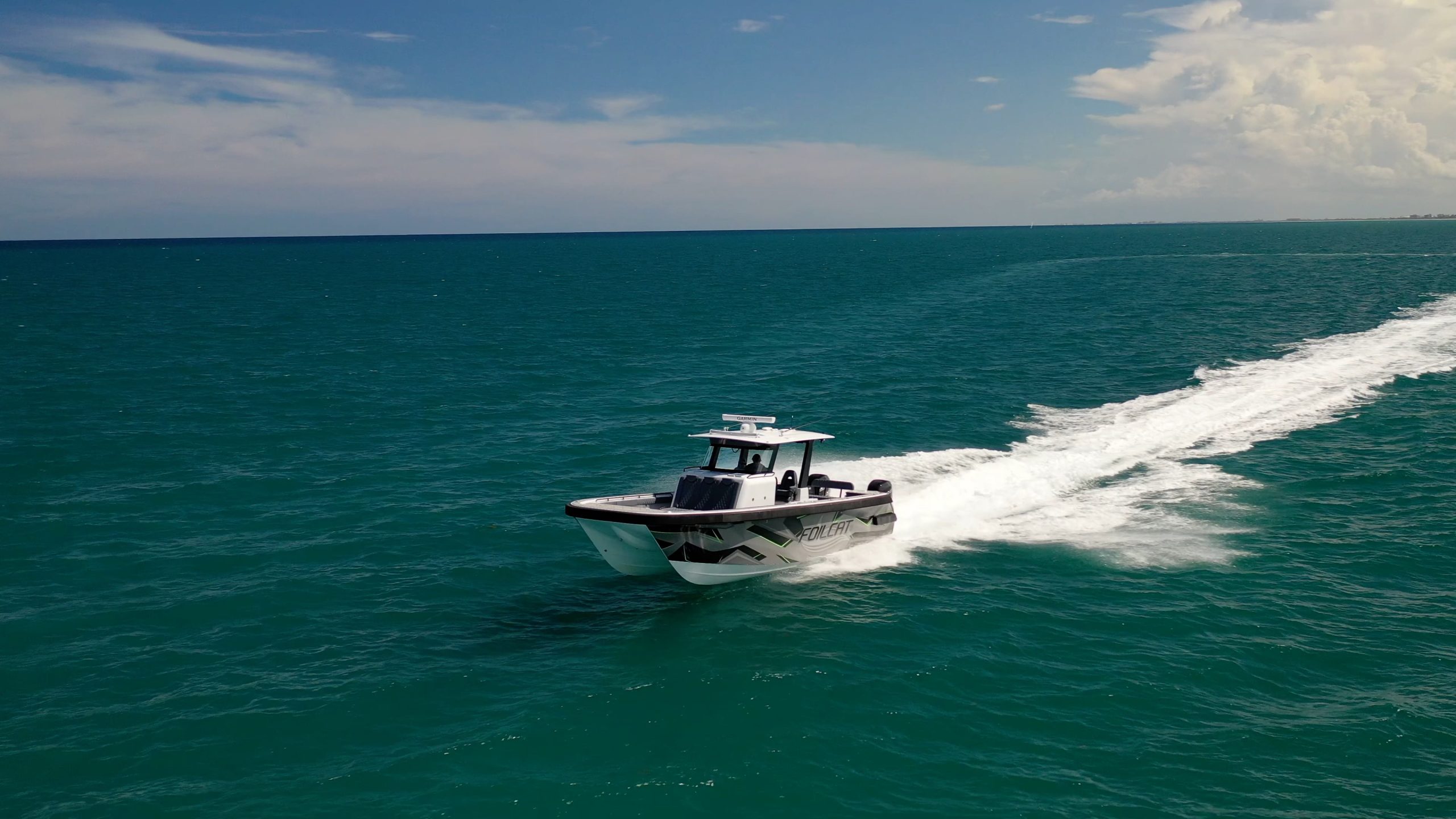
What People Are Saying

Why Foilcat?
The FoilCat Team is relentlessly dedicated in our pursuit of the ultimate user experience accentuated by the highest performance and safety standards throughout the marine industry.
A RIDE LIKE NO OTHER
The foil greatly improves ride quality and efficiency. Reduction in operator and passenger injury and fatigue.
CUSTOMIZABLE
Built to suit from collars to cabin tops and the engines on the back. We work with you to create your dream watercraft.
IMPROVED RANGE
A greater range on same volume of fuel vs any other platform. Our models are 40-50% MORE fuel efficient than our market competitors.
- Motorcycles
- Car of the Month
- Destinations
- Men’s Fashion
- Watch Collector
- Art & Collectibles
- Vacation Homes
- Celebrity Homes
- New Construction
- Home Design
- Electronics
- Fine Dining
- Baja Bay Club
- Costa Palmas
- Fairmont Doha
- Four Seasons Private Residences Dominican Republic at Tropicalia
- Reynolds Lake Oconee
- Scott Dunn Travel
- Wilson Audio
- 672 Wine Club
- Sports & Leisure
- Health & Wellness
- Best of the Best
- The Ultimate Gift Guide
Boat of the Week: Meet ‘Chase Zero,’ the Hydrogen-Powered, High-Speed Foiling Cat That’s Transforming the America’s Cup
Zero carbon emissions, 60-mph top end, software-controlled foils. could this 33-footer revolutionize boating you can bet on it. happy earth day., howard walker, howard walker's most recent stories.
- This 1967 Shelby GT500 Has Been Reimagined to Perfection. Now It’s up for Grabs.
- One of Ferrari’s Earliest Formula 1 Cars Is Now Up for Grabs
- Aston Martin Unveils Its Fastest Vantage Road Car Ever. Here’s What We Know.
- Share This Article

You’re looking at what could become the sportboat of the future: a sleek foiling power catamaran that can glide over the waves at close to 60 mph without burning a single drop of gas. And emit only harmless water vapor from its exhausts.
What sounds like a fantasy, sci-fi vessel has been skating across the Auckland waterfront for a few weeks now. How’s that for an Earth Day boat?
Related Stories
This new 131-foot all-aluminum superyacht lets you take a dip at tip and tail.
- Tesla May Need to Worry About Xiaomi’s New 400-Mile EV
- Someone Finally Made a One-Person Scooter That Drives Like a Tank
What is the secret? An advanced hydrogen fuel cell that can generate enough juice to power twin 295-horsepower electric motors—and take this 33-foot cat over 100 miles at a 40-mph cruise speed.

Team New Zealand ‘s technicians preparing Chase Zero for the initial launch. The boat has been performing well during its first three weeks on the water. Courtesy ETNZ
Meet Chase Zero , the newly launched high-speed chase boat being developed to support the America’s Cup-winning Emirates Team New Zealand and its bid to retain the “Auld Mug” in 2024.
“This is such a cool project. Yes, it’s very much a prototype, but our hope is that it will lead the way by setting the foundations for a seismic shift towards a cleaner, more sustainable future of powerboating around the world,” Dan Bernasconi, head of design at Emirates Team New Zealand, tells Robb Report .
Designed, engineered, built and launched in a mere nine months, Chase Zero came about through the team’s quest to reduce its carbon footprint, and replace its previous chase boat—a 45-foot cat powered by four 300 hp Yamaha V6 outboards—with a significantly more eco-friendly alternative.

The hydrogen-powered chase boat will be used as a fast tender for the America’s Cup sailing race boats, which have been foiling for about a decade. Courtesy ETNZ
Bernasconi explains that chase boats offer vital support during racing, being the first to respond if there’s a collision, capsize, injury or mechanical failure on the racing yacht.
“It means they have to be fast,” he says. “America’s Cup foiling catamarans can hit 50 knots, so a chase boat has to be able to keep up. So foiling technology, just like what we use on our raceboat, was an obvious choice to reduce drag, increase speed and extend the range.”
For its hydrogen-fuel-cell technology, Emirates Team New Zealand turned to its longtime partner Toyota, who gifted a pair of 80kW fuel cells designed for its newest, hydrogen-fueled Mirai four-door sedan, currently available in California.

The 33-foot Chase Zero has an automotive-like profile with a flat stern. It steers via the rear foil. Courtesy ETNZ
The cells—there’s one in each hull—convert the hydrogen stored in four onboard tanks into 400-volt DC electricity by passing the gas over a catalyst and combining it with oxygen from the air. The electrons it produces are then either stored in a pair of 42-kWh battery banks, or fed directly to the two 220kW/295hp electric motors.
In a clever piece of design created by the team, driveshafts run down the twin, forward-mounted foiling legs to torpedo-shaped Mercury Racing drives and propellers embedded within the foils. Steering is courtesy of a single, rear-mounted foiling leg.
So why not do away with the hydrogen fuel cells and simply stick with a big bank of batteries, as do the latest-generation of electric foiling boats, like the new Swedish-made Candela C-8?

Once the foils are dialed in, the foiling cat is forecasted to reach a top speed of 60 mph, with a cruising speed of 35 mph. All with zero-carbon emissions. Courtesy ETNZ
“We did some rough calculations for a purely electric chase boat with batteries. But it was very evident early on that we couldn’t meet the range requirements of running over 100 miles each day at a typical 30-knot cruising speed,” Bernasconi says.
The design of Chase Zero started from the inside out. “We had to look at the space requirements for the fuel cells, batteries and hydrogen tanks,” says the designer. “Plus, we needed to accommodate a crew of six.”
The result is a speedy-looking cat with axe-style bows, stubby transoms and a decidedly sport-car-style cabin with a tall, raked-back windshield and sloping roof. Size-wise, it measures 33 feet overall with a 14.7-foot beam, and 7.2-foot draft. Overall weight is a meager 10,500 lbs.

The America’s Cup team partnered with Toyota for the fuel-cell assembly. Courtesy ETNZ
Video of Chase Zero on its first sea trails in New Zealand show the cat’s twin hulls barely out of the water. Bernasconi explains that the team has been slowly increasing the computer-controlled height of the boat on its foils. Eventually it will run about four feet above the waves. “Obviously Chase Zero is very much a prototype. But now that she’s up and foiling, we’re looking at what is required to turn the prototype into a production boat,” says the designer.
Beyond the America’s Cup , the hydrogen-powered powerboat could have a much wider impact. “The project is all about proving how we can influence the global marine industry by building a prototype hydrogen-powered foiling catamaran,” says Bernasconi. “We hope Chase Zero signals the start of a hydrogen motorboat revolution.”
Read More On:
- America’s Cup
- New Zealand
More Marine

This 92-Foot Yacht Has a Deck Big Enough for Your Chopper

Four Seasons Just Unveiled the First Itineraries for Its Luxury Cruise Ship

Lexus Just Unveiled a Speedy New 68-Foot Yacht

Culinary Masters 2024
MAY 17 - 19 Join us for extraordinary meals from the nation’s brightest culinary minds.
Give the Gift of Luxury
Latest Galleries in Marine

Unica 40 in Photos

8 Fascinating Facts About ‘Wayfinder,’ a 224-Foot Catamaran With a Helipad That Doubles as a Pickleball Court
More from our brands, princess charlene of monaco debuts bob haircut with fringe bangs, channels ’70s disco glamour in elie saab jumpsuit at 2024 rose ball, a-rod, lore say they’re ‘going to be’ the next timberwolves owners, ‘death and other details’ canceled after one season at hulu, marian zazeela, artist behind dizzying drawings and transcendent light shows, dies at 83, the best exercise mats for working out, according to fitness experts.

- About Aeroyacht
- Aeroyacht Design
- Aeroyacht TV
- Mission Statement
- Aeroyacht Racing
- Favorite Links
- Customer Testimonials
- Office Location
- BUY A MULTIHULL
- Specifications
- Photo Gallery
- Try Before You Buy
- Yacht Ownership and Demo Sails
- BUY A POWER CATAMARAN
- Yacht Business Ownership FAQ
- MULTIHULLS FOR SALE
- Aeroyacht Superyacht Catamarans
- Global Multihull Search
- Buy A Multihull
- Sell a Multihull
- Multihull News
- Publications & Articles
- Commissioning & Delivery Services
Multihull For Sale
40′ sunreef hyper foiling power catamaran.

Gallery Images
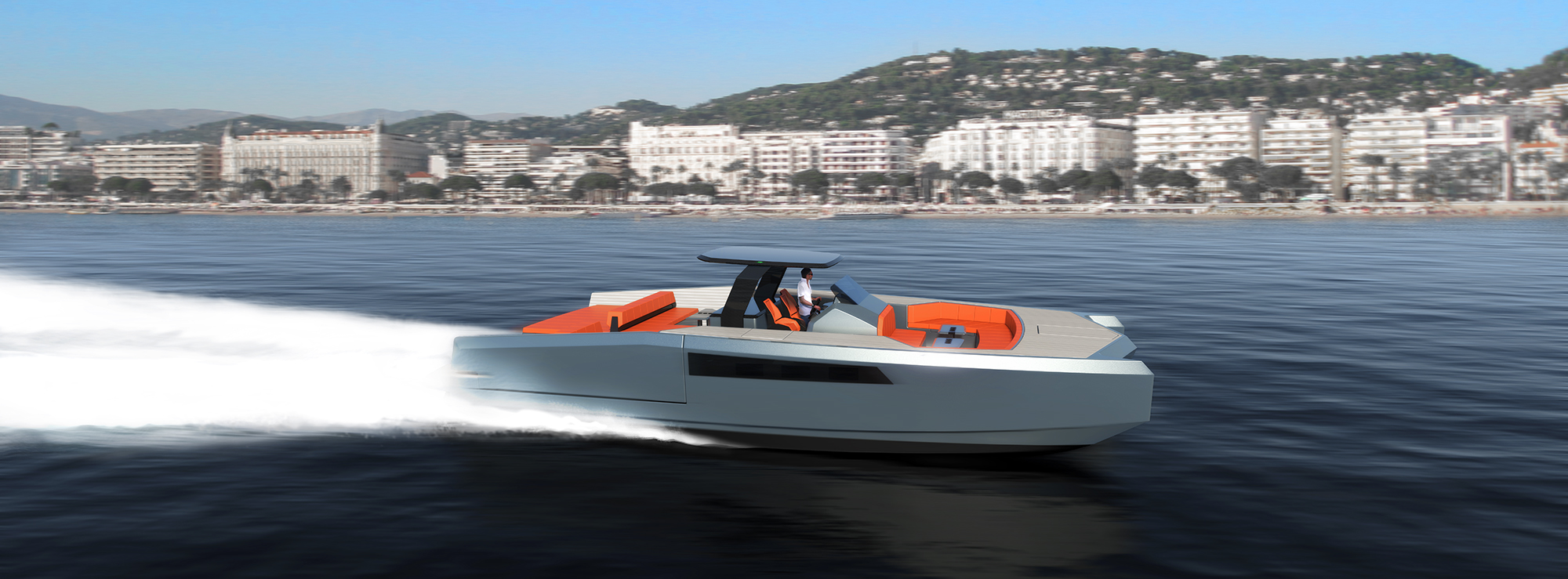
- ".$thumbs[$i]."
Sunreef Yachts, well known for their top quality luxury catamarans have just announced the launch of the company’s very first foiler: The 60 knot + Sunreef Yachts 40 Open Power. The ultimate Riviera style hyper speedster.
Since the 40 Open Power’s first introduction at the Cannes Boat Show in 2014, the company’s design department conducted extensive engineering work and testing to optimize the concept. The day cruising luxury yacht is nothing new – but applying the catamaran platform in addition to twin foils – is revolutionary and will surely set a new benchmark for these types of yachts in the future.
The obvious advantages of the catamaran are its wide beam, providing more stability and space (amazing in fact with the twin opening side doors) as well as a stunning speed. The retractable foils are an innovation first seen at Sunreef Yachts. These hydrofoils permit the boat to exceed 60 knots even in choppy conditions, something that a regular displacement hull could only dream of achieving.
The Sunreef Yachts 40 Open Power is not for everyone. It is a head turning hyper tender of the most exquisite quality and workmanship. The boat can be fully customized with several engine choices, multi use volumes in the bow section as well as the hulls. From day boat to overnight cruiser – the choice is yours.
Ask a Question
Your Name (required)
Your Email (required) [honeypot website]
Your Interest
Your Message
Catamaran News

Planet Sail tests a McConaghy Multihull

Charles Caudrelier wins Arkea Ultim Challenge

Nautitech 48 – Control of the Wind

Boat Test: Nautitech 48 Open catamaran

NEEL 52 Trimaran VIDEO – Sailing at 17 knots
- Catamaran Steering Positions
- Catamarans vs. Monohulls
- Catamaran Learning Center
- Catamaran Speed
- Catamaran Efficiency
- Catamaran Stability
- Catamaran Safety
- Catamaran Shallow Draft
- Catamaran No Heel Sailing
- Catamarans and Seasickness
- Catamaran Space
- Catamaran Boat Handling
- Catamaran Advantages over Monohulls
- Wave-Piercing Bows
- Catamaran Sailing Schools
- Catamaran Insurance
- Catamaran Charter Business and Tax Savings
- Ask the Owner
- 5 Valuable Tips
- Survey Checklist
- Sea Trial Checklist
- MULTIHULLS & CATAMARANS App for Iphone
- Catamaran Surveys
- Multihull Services
- Catamaran Build Consultation
- Financing Services
- Catamaran Repair & Service Facilities
- Catamaran Demo Rides & Shows
- Catamarans for China
- Yacht Design
- Interior Styling & Yacht Art
- Photography
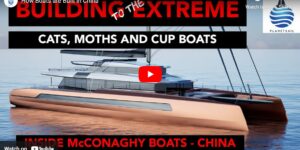
McConaghy MC63 Power Tourer – showing her pace
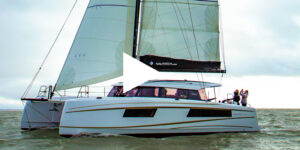
Nautitech 48 Open catamaran – Video

Nautitech 48 catamaran – Interior Design

How the Nautitech 48 catamaran was conceived – Designer Comments.
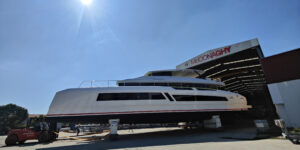
Launched ! – McConaghy MC82P Power
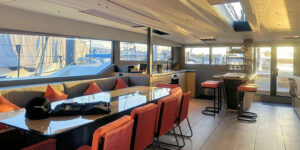
McConaghy 75 catamaran – Stunning NY Loft-Style Interior
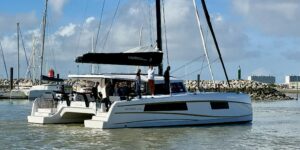
VIDEO: Nautitech 48 catamaran walkthrough. Part 1. EXTERIOR

VIDEO: Nautitech 48 catamaran walkthrough. Part 2. INTERIOR
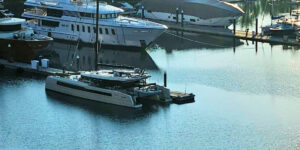
McConaghy 75 Launched.
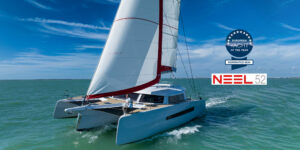
NEEL 52 trimaran nominated European Yacht of the Year 2023
Helpful tips from aeroyacht.
AEROYACHT PUBLICATIONS
Catamaran books by gregor tarjan.

JOIN AEROYACHT’S NEWSLETTER
- No results were found.
Improved Efficiency with Hydro Glide Foil System™
The Aquila Hydro Glide Foil System™, designed by catamaran and foil specialists Morrelli & Melvin Design & Engineering, is available as an option on the extremely popular Aquila 36 Sport as well as the Aquila 42 Yacht . It enhances the performance, consumption, and handling of the already spectacular performance of these two power catamarans. For the Aquila 36 Sport, the hydro-glide foil improves miles per gallon by 40% when compared to a competitor's 36' power catamaran and decreases the fuel consumption rate by 37%.
As reviewed by Boating Magazine: “It’s hard to believe that a piece of metal with no moving parts can be the approximate equivalent of adding 200 horsepower, 100 gallons of fuel, and 100 miles of extra range.” But, that’s what happens when the Aquila Hydro Glide Foil System is attached between the two hulls.
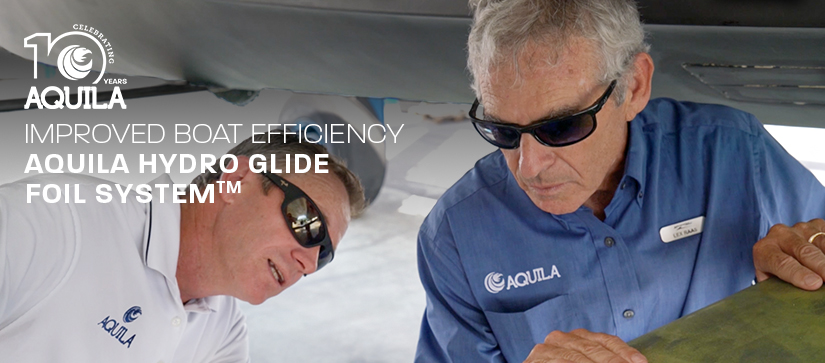
Improved Boat Efficiency | Aquila Hydro Glide Foil System™
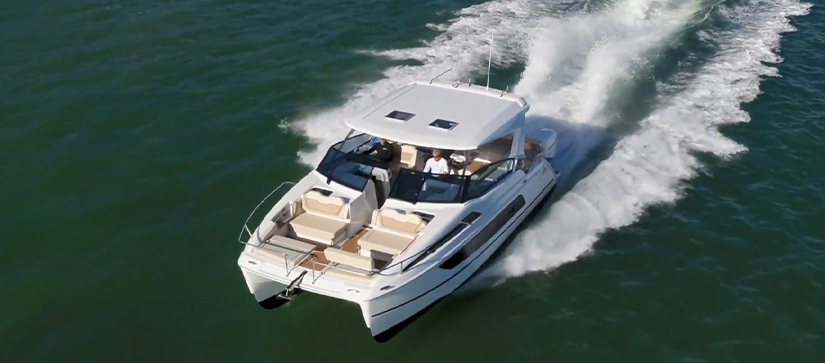
An In-Depth Look at the Hydro Glide Foil
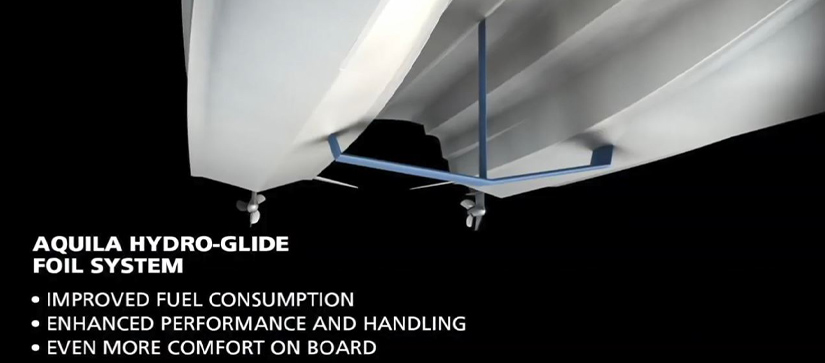
How the Hydro Glide Foil Came to Be
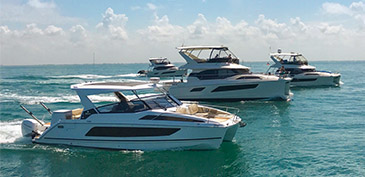
Have Questions?
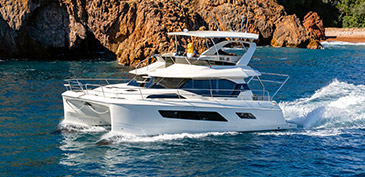
Request an Aquila Brochure
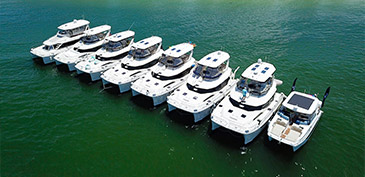
Discover Our Models

Power cats for business & pleasure.
40' Foiling Cat

Rapido Catamarans' 40' (12.2m) Foiling Cat, designed by world-acclaimed naval architects, Morrelli & Melvin , offers a 21st Century solution to age old problems !

General Specifications
To be updated.
Related article:
Ferries that fly could make it easy - and fast - to travel by boat , published in the Bangkok Post on 18 July 2020 (includes quotes from Morrelli & Melvin's Pete Melvin (Morrelli & Melvin designed the Rapido Catamarans' 40' Foiling Cat)).

Gallery (Click on images below to enlarge.)

General Information
Morrelli & Melvin (MM) are our world acclaimed naval architects from the US. They are world leaders in designing performance catamarans and trimarans.
Their foil and hull designs benefit from more than 30 years' experience with high performance foiling sailboat design with which includes four America’s Cups.
What is so special about foiling for a power cat?
Foiling power cats are so special because they result in a huge increase in both performance and fuel economy and also offer a better sea ride. MM claim that with similar foils, total efficiency gains of 50% or greater are possible. Another important benefit is that the boat can bank at 5-7 degrees into turns and turn with less effort and speed loss than before the foil installation.
The 40' foiling cat is particularly well suited for luxury resort groups requiring fast, luxury commuter cats (this boat can do 40kts cruising... but can also reach speeds in excess of 50kts) for up to 33 pax.
The design and engineering utilizes Morrelli & Melvin's latest technology with plumb bow for better performance and riding hull as you get more water line length and finer hull for the same displacement.
The cabin design and layout can be for:
Fishing boat (centre console)
Owner's live aboard; or
Other!
Recommended engines are 350hp twin outboards - but this boat can take up to 450hp). Easy to maintain.
The boat can be built without options if the customer prefers.
Base price ex factory with foils depending on engines and options from US$450,000.
F1x A-class foiling catamaran
World champion, lighter = better, craftsmanship, meet the foiling f1x a-class catamaran.
This is the ultimate singlehanded foiling catamaran of the moment: ultramodern, incredibly fast, very agile, extremely strong and feather-light, in an aerodynamic and ergonomic design. The perfect total package, packed in 1 foiling catamaran. This is the world’s coolest boat for singlehanded races and the winner of several A-cat world championships and many other sailing races.
The 2020-F1x A-cat is exactly the same foiling catamaran that made Mischa Heemskerk Vice-World Champion at the Herveybay Worlds 2018 in Australia and World Champion at Weymouth 2019. All our foiling F1x A-class catamarans come straight, ready to race and ‘Mischa-tuned’ from our factory.
Unique design enables top performances
The F1x A-class foiling catamaran is the ultimate reflection of our current design language. The aerodynamic design accentuates the performance qualities of this super fast foiling racing boat. The sophisticated deck plan provides clear control and minimal air resistance.
Foils The rudders and daggerboard foils used on the F1x A-class foiling catamarans are produced with the highest quality carbon pre-preg fibers. The foils are cured in our own Autoclave . Our winning foil design was created in close cooperation with Glenn Ashby and the designers of AC Team New Zealand .
Construction The F1x A-cat is manufactured entirely according to the carbon pre-preg/ Nomex production method, and cured in our Autoclave. This technology is the same as used in the aerospace industry and within other foiling boats like for example, the America’s Cup.
Design The design of the F1x foiling A-class catamaran was completely conceived by the DNA design team and made at DNA’s own yard. In the DNA design team Pieterjan Dwarshuis, Mischa Heemskerk and the renowned Dutch industrial design engineer Rudo Enserink worked closely together to create the perfect foiling A-class catamaran.
We build your new foiling boat!
Technical details.
The F1x A-class foiling catamaran has a number of unique features that improve performance. For example:
- Semi ridged trampoline. Gives extra torsional stiffness to the boat and increases its aerodynamic characteristics.
- Patented main-sheet-wheel-system. For more direct and faster trim of the main sail.
- Aerodynamically placed traveller car.
- Flexible daggerboard casings. For minimal water absorption in floating mode.
- Aerodynamically shaped ‘beams’.
- Adjustable T-rudders. Foiling with rudder differential is possible.
Specifications
LOA: 5.49 m BOA: 2.30 m Max. draught: 1.20 m Sail area: 13.94 m Total weight: ca. 53 kg Top speed: 31 kn Extra: All measurements according to IACA Class regulations.
Buy a champion's boat!
Are you excited to buy a F1x A-class foiling catamaran from DNA Performance Sailing? Please fill in our contact form:
Yes, I want a F1x A-cat!
Schrijf je in voor onze nieuwsbrief en blijf op de hoogte van de nieuwste ontwikkelingen.
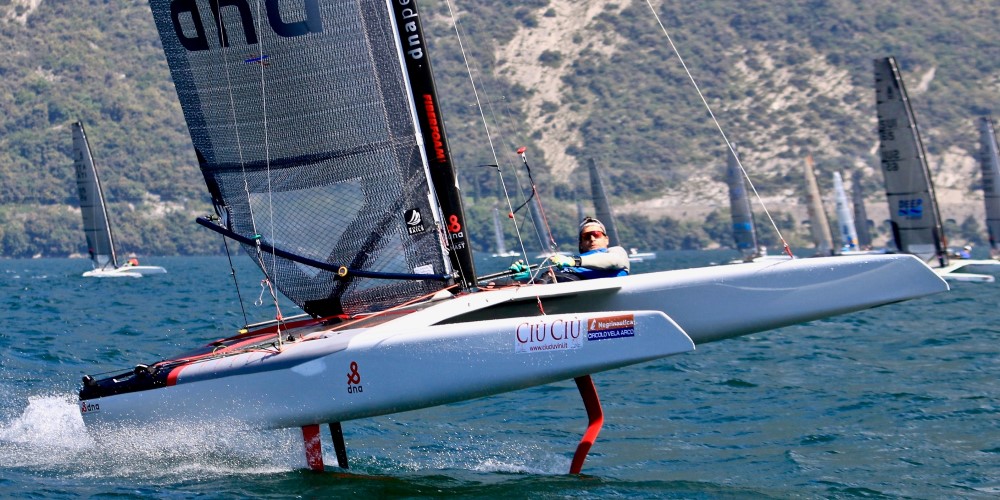
Contactformulier
- Company Name
- Full name * First Last
- Emailaddress *
- Phonenumber *
- Mijn vraag betreft * My question: TF10 F1x G4 F4 Custom Parts Hydrofoils Other
- Phone This field is for validation purposes and should be left unchanged.
Registrieren Sie sich für unseren Newsletter
lassen Sie sich über die neuesten Entwicklungen informieren!
- E-Mail-Adresse *
- Name This field is for validation purposes and should be left unchanged.
Schrijf je in voor onze nieuwsbrief
blijf op de hoogte van de nieuwste ontwikkelingen!
- First name *
- Last name *
- Email This field is for validation purposes and should be left unchanged.
Wij gebruiken cookies om u de beste online ervaring te bieden. Door akkoord te gaan, accepteert u het gebruik van cookies in overeenstemming met ons cookiebeleid.
Wanneer u een website bezoekt, kan deze informatie in uw browser opslaan of ophalen, meestal in de vorm van cookies. Beheer hier uw persoonlijke cookiediensten.
- wordpress_test_cookie
- wordpress_logged_in_
- wordpress_sec

Facts About Powercat Foils
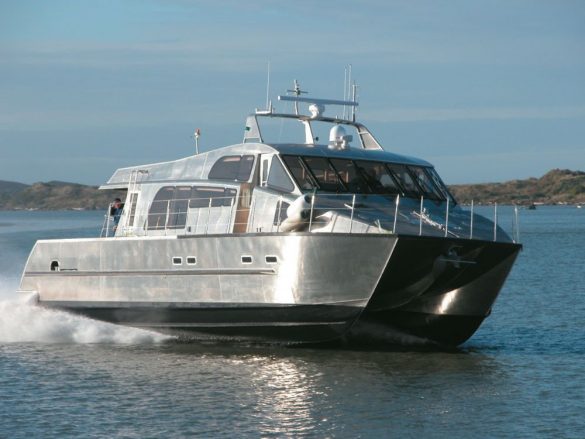
Engineer Andre Moltschaniwsky of Lomocean Design looks at the question of foiling in power boats, a subject that has been brought to the front so graphically with the recent America’s Cup AC72s.
It is fair to say that by now, most people out there with any kind of interest in boats at all will have a pretty good understanding of what ‘foils’ are and what ‘foiling’ is. This was illustrated very graphically for day after (painful) day last September as our screens were filled by the fantastic sight of two 72’ wing powered America’s Cup sailing cats blasting around San Francisco Bay on hydro-foils at speeds that a few power boaters can relate to, but probably not too many yachties.
The word ‘foil’ actually has a number of meanings and I was delighted to hear America’s Cup TV commentator and sailing legend Chris Dickson deadpan the expression “foiled by the fickle finger of fate” as race 13 was abandoned when the 40 minute time limit was reached, depriving Emirates Team New Zealand of the America’s Cup by a matter of only a few minutes. I had always heard a slightly modified, but less publishable version of the epithet, but being foiled in a competition that relies so heavily on a different kind of foil to achieve sheer, outright speed does have a certain symmetry to it…
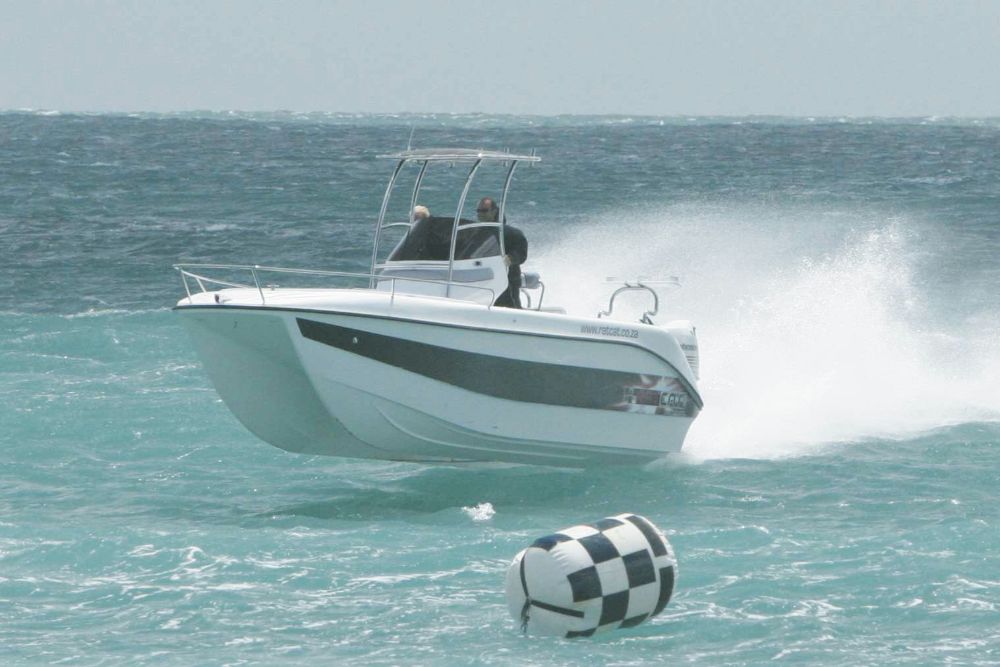
So we know that foils can be used to make boats ‘fly’ above the water, but in technical terms, what is a ‘foil’?
Leaving aside swords, very thin sheets of aluminium used to wrap food in and the verb for thwarting someone or something, a foil is basically what most people would call a ‘wing’ – and is the technical term for a lifting body that generates force on one side due to the flow of a fluid past that body. The fluid can be gas or liquid – air or water – and the density of the fluid, the speed with which it flows over the foil, the shape of the foil and the angle of attack (the angle at which the fluid flow meets the foil) all dictate how much lifting force it can generate – and how much drag is also produced.
Even a flat plate can be a lifting body although it needs to be at an angle to the air or water flow to generate lift; more complex foils are shaped such that air or water has to flow faster over one side than the other. Although fluid dynamics experts will probably frown at the following explanation, this velocity difference causes a higher pressure on one side of the foil and a significant lower pressure on the other – generating a net lifting force.
This principle is put to good use in a myriad of applications from aircraft and propellers, to turbines and rudders. If you have a flow of fluid and can place a foil in it, you can generate useful forces from the energy associated with that flow.

The towering AC72 wing sail is a collection of air foil elements that generates lift and thus a propelling force as the wind flows over it. The hydro foils are wings that move through the water due to the driving force generated by the wing sail and in turn, generate hydro dynamic lift, picking the boat up and (mostly) out of the water to reduce the drag associated with moving the hulls through the water.
So why put a hydrofoil on a boat in the first place?
Well, whether you are dragging a displacement or a planing hull through the water, there is a great deal of resistance associated with the combination of skin friction (wetted surface area) and wave making drag. On displacement mono-hulls, wave making drag tends to dominate, because the hull is essentially always supported by buoyant forces rather than by any kind of dynamic lift, so pretty much the same amount of hull remains in the water throughout the speed range as it does when the boat is stationary.
Displacement mono-hulls in particular tend to be slow boats, limited to how fast they can go as a function of their ‘hull speed’ – usually defined (in knots) by the square root of the water line length (in feet) multiplied by a constant – usually between 1.3 and 1.5. Thus, a displacement hull with a waterline length of 30 feet can be expected to top out at around 7.5 knots. You can make a displacement hull move faster than hull speed but you will need to generate some dynamic lift to reduce drag caused by wave making and wetted area, so often a fast sailing yacht hull will be light and will have a flat run in it’s aft sections to promote lift.
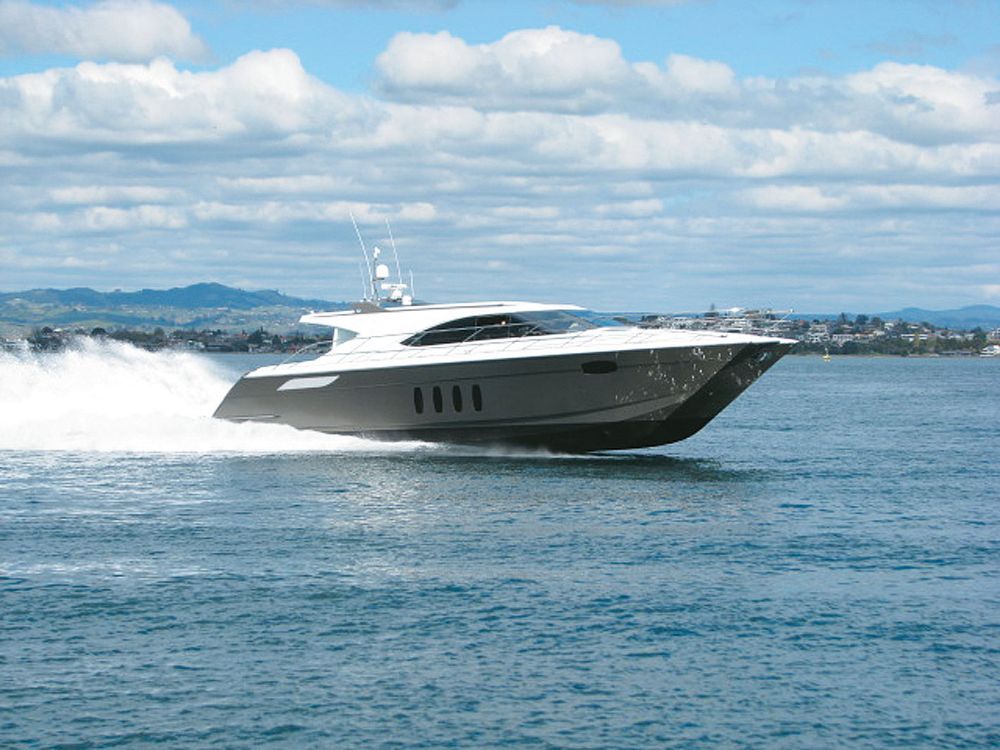
Conventional fast powerboats generally use the planing hull form that most of us are familiar with. This is characterized by flat bottom shell surfaces bounded by down angled and sharp cornered chines – often with flat keel planks and strakes to add lift and control spray.
And, usually with more or less deadrise angle to reduce slamming, particularly on smaller planing hulls. There are some great photos on the internet of upside down tables (ie a planing surface with zero deadrise angle!) with an outboard motor clamped to one end that look to be planing beautifully.
These flat plane hull shapes are intended to promote lifting forces as the speed of the boat increases, although rather than generating lift due to low pressure on an upper surface, it can only create lift by deflecting oncoming water downwards. For every action there is an equal and opposite reaction, so by deflecting the water flow downwards, a reaction force is generated that pushes the boat upwards.
Removing hull area from the water reduces drag or resistance – and that allows the boat to increase it’s speed. Making boats go fast is really about adding power and reducing drag, so getting as much boat out of the ‘sticky’ water as possible is very desirable. Of course you still need something in the water to push the boat along and steer it – otherwise you become an airplane – but raceboats at really high speed often have only a very small portion of the hull, plus the drive skeg and propeller in the water. And, when their angle of attack becomes too great, they can turn – briefly – into an airplane…
Generating planing lift off one side of a flat plate by deflecting the flow downwards is not a terribly efficient way to generate lift – the associated drag remains quite high, so in some – but not all situations – it is logical to look at using more efficient, low drag foils to generate that lift instead.
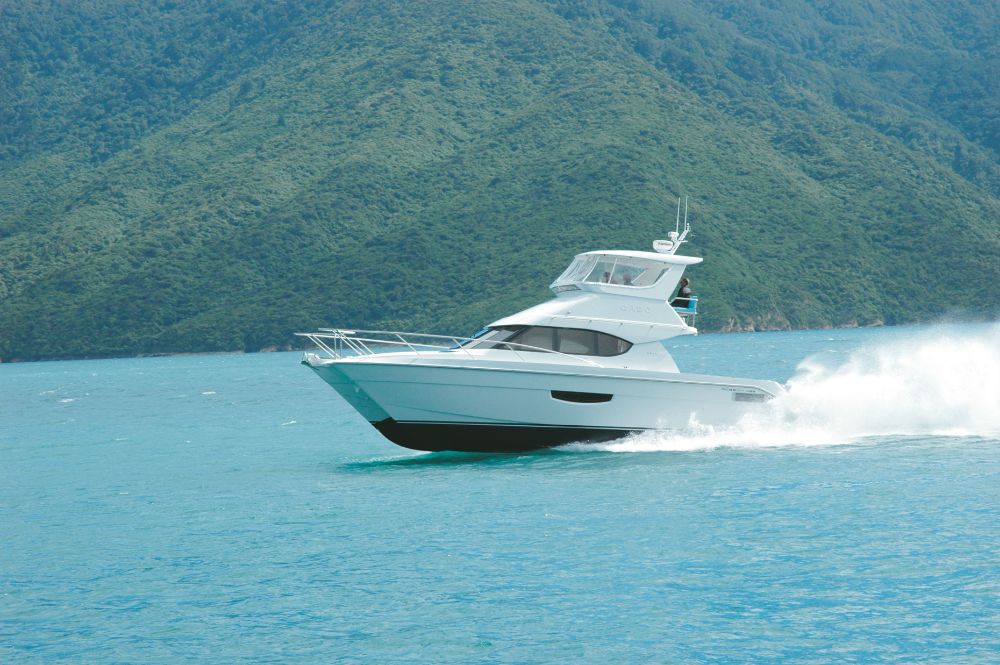
Are foils on boats anything new?
If you consider that the first proper boats were launched by their proud builders many thousands of years ago, then the advent of hydro foils on boats is fairly recent. That said, in the years that the Wright brothers and Richard Pearse were experimenting with air foils in their attempts to fly, Italian Enrico Forlanini and Briton John Thorneycroft were both successfully doing the same with hydro-foils.
By late 1919, Alexander Graham Bell (of telephone fame) had set a world water speed record of just under 71mph in the twin 350hp powered, foil borne HD4. So hydro foils have actually been with us for quite some time and seen action in a number of different applications. Spectacular though the AC72s may have been while flying around San Francisco bay – and, while putting foils on an America’s Cup yacht might be new and radical, plenty of boats – both power and sail, big and small have done it all before.
For example, in the 90s and early 2000s, legendary French sailors Alain Thébault and Eric Tabarly designed, built and sailed the amazing 18m foil borne trimaran ‘Hydroptere’ into the record books, achieving nearly 53 knots under sail in 2008, breaking the speed record over 500m at the same speed in 2009 and briefly touched 56 knots. Before crashing, admittedly. This however, is one sail boat that might just leave an AC72 in it’s wake…
At the other end of the scale, the International Moth is a small sailing dinghy – a development class – that has embraced hydro-foils in recent years, achieving speeds in the order of 30 knots flying on impossibly thin wands – and creating interest that has seen hydro-foils fitted to Lasers and Hobie 16s. Given the recent exposure with the America’s Cup, it is entirely possible that we will see some foiling 8.5m class catamarans breaking records in future ‘Coastal Classic’ yacht races, providing Cat 3 race safety requirements don’t get in the way.
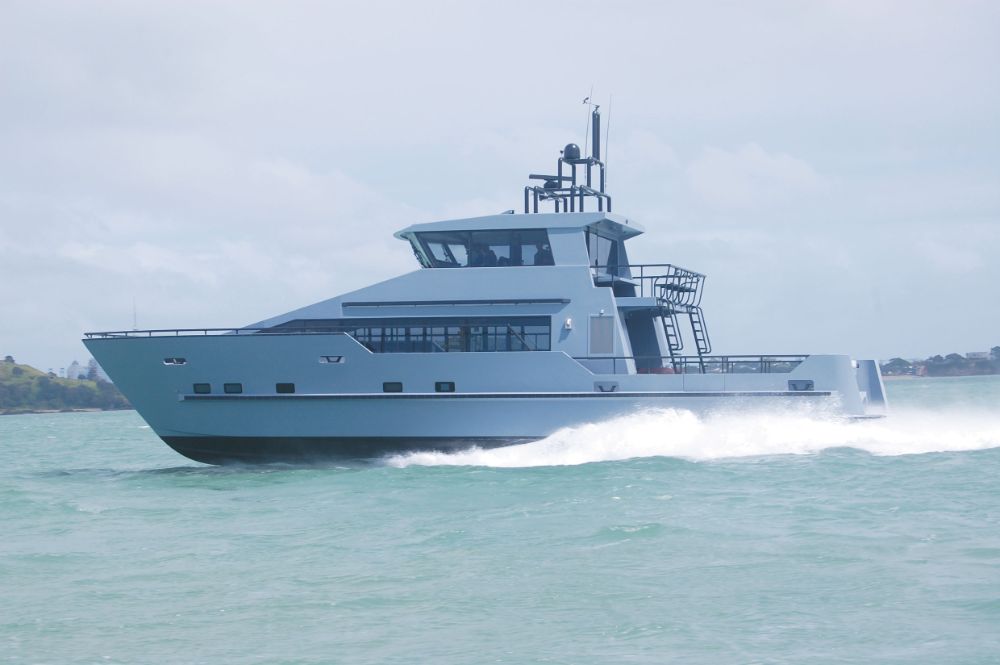
Foiling in powerboats
The military were early adopters of hydrofoil technology in power boats and Canada worked on an experimental smoke laying hydrofoil during World War II. Between the early 1950s and early 1990s, the US, Soviet and Italian Navies all developed hydrofoils for torpedo boat, missile boat and patrol applications, some of which remain in active service today.
Youtube is a treasure trove of footage of these boats and there is a great old documentary online about the US development of Navy hydrofoils that is well worth a watch if you have read this far. There is something quite fascinating about watching a seriously big Navy ship climbing out of the water in stately fashion and flying over the waves, before settling off the foils and back into the water in very dignified matter. There is also footage of smaller hydrofoils in heavy seas and although they at times glide serenely over the waves, it gets very wet, very quickly when the hull briefly touches down in the face of an oncoming swell.
Passenger craft hydrofoil development was also strong during this post war period with the Soviets being particularly prolific, building large numbers of foil borne ferries – chiefly for long distance operation on their inland waterways, but also for export to countries all over the world. Aircraft manufacturer Boeing also dabbled with hydrofoils, looking to take it’s expertise in production manufacturing of aircraft into the passenger ferry market with the Boeing 929 Jetfoil.
Typically, the US and Soviet approaches differed – the Americans favouring full submerged foils that required complex control systems to operate and the Soviets using a more robust, simplistic surface piercing foil system that automatically regulates altitude, pitch and roll without fancy electronics and moveable control surfaces. Even today, fast hydrofoils operate for thousands of miles along inland water ways in the former Soviet territories, sometimes offering the only viable fast passenger transport service.

In the post war years, German was prohibited from building fast boats, so a German engineer named Hanns Von Schertal – who worked on hydrofoil design before and during World War 2 – set up Swiss company Supramar, which was one of the first passenger ferry hydrofoil designers.
Built by Rodriquez, the Supramar PT20 Manu Wai foiling ferry was delivered into service between Waiheke Island and Auckland in 1964 where it operated for nearly 10 years. Later, Manu Wai saw intermittent service as a charter vessel between layups – and a misadventure with a mud bank that saw the foils badly damaged – before shipping across the Tasman to Sydney, where she resides today, still in working condition.
Many of the early mono-hull hydrofoils remain in service today; ride qualities in rough seas can be superb and fuel efficiency can be excellent, so hydrofoils remain a common sight in places such as Hong Kong. However they are technically complex, expensive to build, vulnerable to damage and expensive to maintain, particularly when complex mechanical systems are required for propulsion and to retract the foils so that the vessel can berth and traverse shallow water.
An associate of mine was involved in the early 1990s with the construction of a foil borne catamaran ferry in Sweden. The boat was delivered to Indonesia, where it operated successfully and efficiently until one of the custom built water jet intake ducts located in a foil strut was hit by a floating log, putting the ferry out of action for 3 months while a (hellishly expensive) replacement part was constructed and shipped from Sweden. In the meantime, the operator went broke, because their chief source of revenue was no longer operable and thus no longer making money for them.
The development of the assist foil
For reasons such as this, ageing hydrofoil fleets have yielded in the last few decades to simpler, less costly catamarans. And that in turn has lead to development of a more subtle, less visible, but nonetheless very effective type of hydrofoil – the assist foil.
Developed by Professor Gunter Hoppe and his team at Stellenbosch University, South Africa in the 1970s, the “Hysucat” or Hydro Foil Supported Catamaran employs an assist foil that is intended to partially foil support the boat. Rather than lifting all of the hulls clear of the water – necessitating expensive drivelines – Hoppe’s foil spans between the two catamaran hull forms and is located close to or above the keel line of the two demi-hulls, thus reducing vulnerability to grounding or impact with floating objects. This system tends to use a main foil located at or just forward of the longitudinal centre of gravity and is often locked at a fixed angle.
On more complicated installations, the angle of attack can be adjusted to vary the lift and drag offered by the foil. A much smaller trim foil (or foils) is then located near the stern of the catamaran and again, this/these can be set up at a fixed angle, or can be adjustable to vary the trim angle of the boat and thus the angle of attack of a fixed main foil.
Generally this system is designed to carry approximately half the displacement of the vessel at maximum speed. The driveline remains immersed, so conventional propulsors can be used, keeping cost down and generally significant improvements in fuel burn can be achieved for a given service speed by fitting a foil to a fast catamaran – a very worthwhile saving if you are ferry operator. And, because the dynamic lift from the foil raises the catamaran higher in the water than it might normally operate, slamming on the tunnel roof can be reduced, offering notable improvements in ride quality in many instances.
This Hysucat system was patented by Stellenbosch University – although not globally – and the patent has since expired, so assist foils have been adopted around the world on catamarans, including a number of commercial ferries, designed, built and operating here in New Zealand.

So how relevant is all this to pleasure boating in power boats?
Well, the key benefits of partial or complete foil support are sea kindliness and fuel efficiency – so both are of interest to typical pleasure power boaties with a 10 – 24m motor boat – and generally this is why we have either specified or retro-fitted assist foils on a number of cataramans we have been involved with in the past.
Retro-fitting foils is a great way to gain an understanding of the benefits that can be gained, because diesel fuel burn data gained during sea trials pre and post fitting of the foil clearly demonstrates the effect of the foil. Our experience has shown that assist foils can offer significant improvements – up to 18% reduction in fuel burn at cruise in some instances and increases in speed from 30 knots without foils to 38 knots with them. For the relatively modest cost involved, there probably aren’t any other comparable mechanisms to achieve such a gain, although you do need to be doing reasonably big mileage before the fuel savings justify the investment.
There is some potential to fit assist foils to planing mono-hull pleasure boats – and of course, even to fully foil support them, just as has been achieved with ferries and military craft. There is some great footage of a 24’ Bayliner owned by ex-Boeing engineer Harry Larsen, who designed and installed the foils – and importantly, the systems required to keep the boat at constant altitude and to control roll, yaw and pitch. Larsen’s original system used a simple mechanical system involving a ski that skims the surface of the water and is connected to the forward foil pitch controller to maintain ride height – and this system is commonly used on the foiling Moths mentioned earlier. The later system uses electronic control systems and hydraulics to alter foil pitch.
But why hasn’t the world embraced hydro-foils more? Shouldn’t we all have one?
Plenty of people are interested in Larsen’s flying Bayliner – there are nearly 1 million views on Youtube – but he has never had enough inquiry about the foil system to make production viable for retro-fit – and as he wryly notes on his website – no-one ever asked him if they could buy the boat.
Maybe pleasure boaters are just too conservative, or maybe the risks and downsides really do outweigh the positives. America’s Cup 2013 is bound to have renewed interest in foils and foiling, so a boom in foiling sail boats could well be on the cards.
Certainly the number of foil assisted catamarans on the market – at least the faster ones – are on the rise, probably because they are simple, robust and reliable and offer significant benefits for reasonable cost. And that is really the key, particularly when most of the world’s power boat pleasure boating happens in mono-hulls. If fully foiling mono-hulls isn’t practical or desirable, perhaps the next big thing in pleasure boating will be the assist foil for mono-hull power boats? Watch this space…
Diesel Sterndrives Updated
Joystick steering, related articles, antifouling – regulations & tips, an improbable trip around the world – part..., stealth fishing with electric trolling motors, the history of kiwi trailer boats by the..., towing big rigs, slow pitch jigging, mclay boats – company profile, dometic marine – company profile.

D&B Publishing is proud to have delivered the Pacific regions best power boat read for over 25 years. Our PowerBoat team brings you the news, views and reviews from around the world. A team second to none when it comes to power boating.
- Boat Reviews
- Boat Safety
- Destinations
- Buyer Guide
- General Interest
- Company Profile
- [email protected]
- +64 9 428 2328

Support our hydrofoil educational content for free when you purchase through links on our site. Learn more
[2023] Hydrofoil Catamaran: The Ultimate Guide to Foiling on Water
- November 1, 2023
- Hydrofoil Basics
Experience the thrill of flying above the water with a hydrofoil catamaran!
Are you ready to take your hydrofoil boarding to the next level? Look no further than the hydrofoil catamaran. In this comprehensive guide, we’ll dive deep into the world of hydrofoil catamarans, exploring their history, how they work, their benefits and drawbacks, and everything else you need to know to make an informed decision. So, buckle up and get ready to soar above the waves!
Table of Contents
Quick answer, quick tips and facts, how does a hydrofoil catamaran work, benefits of hydrofoil catamarans, drawbacks of hydrofoil catamarans, choosing the right hydrofoil catamaran, maintenance and care, recommended links, reference links.
A hydrofoil catamaran is a type of watercraft that combines the stability of a catamaran with the lift and speed of hydrofoils. It uses specially designed foils to lift the hulls out of the water, reducing drag and allowing for faster and smoother sailing. Hydrofoil catamarans are popular among sailors and water sports enthusiasts for their incredible speed, maneuverability, and thrilling foiling experience.
Shopping Links: Hydrofoil Catamarans on Amazon | Hydrofoil Catamarans on Walmart | Hydrofoil Catamarans on Etsy
- Hydrofoil catamarans can reach speeds of up to 40 knots (46 mph) or more, depending on the design and conditions.
- The foils on a hydrofoil catamaran can lift the hulls out of the water, reducing drag and allowing for a smoother and faster ride.
- Hydrofoil catamarans are used for various purposes, including racing, recreational sailing, and even transportation.
- Foiling on a hydrofoil catamaran requires some skill and practice, but it’s an exhilarating experience once you get the hang of it.
- Hydrofoil catamarans come in different sizes and designs, catering to different skill levels and preferences.
Hydrofoil catamarans have a fascinating history that dates back to the early 20th century. The concept of using hydrofoils to lift boats out of the water and reduce drag was first explored by Italian engineer Enrico Forlanini in the late 1800s. However, it wasn’t until the 1950s that hydrofoil technology started to gain traction in the boating world.
The first hydrofoil catamaran, known as the “Aquavion,” was developed by the French engineer René Guilbaud in the 1950s. This innovative design combined the stability of a catamaran with the lift of hydrofoils, revolutionizing the world of sailing. Since then, hydrofoil catamarans have evolved and become more advanced, offering incredible speed, maneuverability, and stability on the water.
A hydrofoil catamaran works by utilizing hydrofoils, which are wing-like structures mounted underneath the hulls of the boat. These foils generate lift as the boat gains speed, lifting the hulls out of the water and reducing drag. This lift allows the hydrofoil catamaran to achieve higher speeds and a smoother ride compared to traditional boats.
The hydrofoils on a catamaran are typically designed with a curved shape, similar to an airplane wing. This shape creates a pressure difference between the upper and lower surfaces of the foil, generating lift. The foils are usually adjustable, allowing the sailor to fine-tune the performance of the catamaran based on the sailing conditions.
To control the hydrofoil catamaran, sailors use a combination of steering and sail trim. By adjusting the angle of the foils and the sails, they can optimize the lift and balance of the boat, ensuring a stable and efficient ride. It takes some practice to master the art of foiling on a hydrofoil catamaran, but the rewards are well worth the effort.
Hydrofoil catamarans offer a range of benefits that make them a popular choice among sailors and water sports enthusiasts. Here are some of the key advantages of hydrofoil catamarans:
Speed : Hydrofoil catamarans are known for their incredible speed. By lifting the hulls out of the water, hydrofoils reduce drag and allow the boat to glide smoothly above the waves. This enables hydrofoil catamarans to reach impressive speeds, making them a thrilling choice for racing and high-performance sailing.
Maneuverability : The lift generated by hydrofoils enhances the maneuverability of catamarans. With reduced drag, hydrofoil catamarans can make sharp turns and quick maneuvers with ease. This agility is particularly useful in racing scenarios, where every second counts.
Stability : The dual-hull design of catamarans provides inherent stability, even at high speeds. When combined with hydrofoils, the stability of hydrofoil catamarans is further enhanced. This stability makes them suitable for sailors of all skill levels, from beginners to experienced professionals.
Efficiency : Hydrofoil catamarans are more efficient than traditional boats. By reducing drag, hydrofoils allow the boat to sail faster while using less power. This increased efficiency translates to longer sailing distances and reduced fuel consumption, making hydrofoil catamarans an environmentally friendly choice.
Versatility : Hydrofoil catamarans are versatile watercraft that can be used for various purposes. Whether you’re looking for a high-performance racing catamaran or a recreational sailboat for family outings, there’s a hydrofoil catamaran to suit your needs. Some models even offer the option to switch between foiling and non-foiling modes, providing flexibility on the water.
While hydrofoil catamarans offer numerous benefits, it’s important to consider their drawbacks as well. Here are a few potential downsides to keep in mind:
Cost : Hydrofoil catamarans tend to be more expensive than traditional boats. The advanced technology and materials used in their construction contribute to the higher price tag. Additionally, maintenance and repairs can also be costly, especially if specialized parts or services are required.
Learning Curve : Foiling on a hydrofoil catamaran requires some skill and practice. It can take time to learn how to control the boat effectively and maintain stability while flying above the water. Beginners may find the learning curve steep, but with dedication and proper instruction, anyone can master the art of hydrofoil catamaran sailing.
Weather Conditions : Hydrofoil catamarans are sensitive to weather conditions. While they excel in flat water and moderate winds, rough seas and strong gusts can pose challenges. It’s important to be aware of the weather forecast and choose suitable sailing conditions to ensure a safe and enjoyable experience.
Transportation and Storage : Hydrofoil catamarans can be larger and bulkier than traditional boats, making transportation and storage more challenging. Specialized trailers or racks may be required to transport the catamaran, and adequate storage space is needed to protect it when not in use.
Despite these drawbacks, the thrill and excitement of foiling on a hydrofoil catamaran outweigh the challenges for many sailing enthusiasts.
When it comes to choosing the right hydrofoil catamaran, there are several factors to consider. Here are some key points to keep in mind:
Skill Level : Consider your skill level and experience as a sailor. Some hydrofoil catamarans are designed for advanced sailors, while others are more beginner-friendly. Choose a catamaran that matches your skill level to ensure a safe and enjoyable sailing experience.
Intended Use : Determine how you plan to use the hydrofoil catamaran. Are you looking for a racing catamaran, a recreational sailboat, or something in between? Different models offer varying features and performance characteristics, so it’s essential to choose a catamaran that aligns with your intended use.
Budget : Set a budget for your hydrofoil catamaran purchase. Prices can vary significantly depending on the brand, model, and features. Consider both the upfront cost and the long-term maintenance expenses when determining your budget.
Brand and Reputation : Research different brands and their reputation in the hydrofoil catamaran industry. Look for brands with a track record of producing high-quality, reliable catamarans. Reading customer reviews and seeking recommendations from experienced sailors can also provide valuable insights.
Demo and Test Sails : Whenever possible, try out different hydrofoil catamarans before making a final decision. Many manufacturers and dealers offer demo and test sails, allowing you to experience the performance and handling of the catamaran firsthand. This hands-on experience can help you make an informed choice.
Remember, choosing the right hydrofoil catamaran is a personal decision that depends on your individual preferences and needs. Take your time, do your research, and consult with experts to find the perfect catamaran for your hydrofoil adventures.
Proper maintenance and care are essential to keep your hydrofoil catamaran in top shape and ensure its longevity. Here are some maintenance tips to help you keep your catamaran performing at its best:
Rinse with Fresh Water : After each sailing session, rinse your hydrofoil catamaran with fresh water to remove salt and debris. Pay special attention to the foils, as saltwater can cause corrosion over time.
Inspect for Damage : Regularly inspect your catamaran for any signs of damage or wear. Check the foils, hulls, rigging, and sails for any cracks, dents, or loose fittings. Address any issues promptly to prevent further damage.
Store Properly : When not in use, store your hydrofoil catamaran in a dry and secure location. If possible, keep it covered to protect it from the elements. Consider using a boat cover or storing it in a boat shed or garage.
Follow Manufacturer’s Guidelines : Follow the manufacturer’s guidelines for maintenance and care. Each catamaran may have specific recommendations for cleaning, lubrication, and other maintenance tasks. Adhering to these guidelines will help prolong the life of your catamaran.
Seek Professional Assistance : If you’re unsure about any maintenance tasks or need assistance, don’t hesitate to seek professional help. Local boatyards, sailing clubs, or authorized dealers can provide expert advice and services to keep your catamaran in optimal condition.
By following these maintenance tips and caring for your hydrofoil catamaran, you can enjoy many years of thrilling foiling adventures on the water.
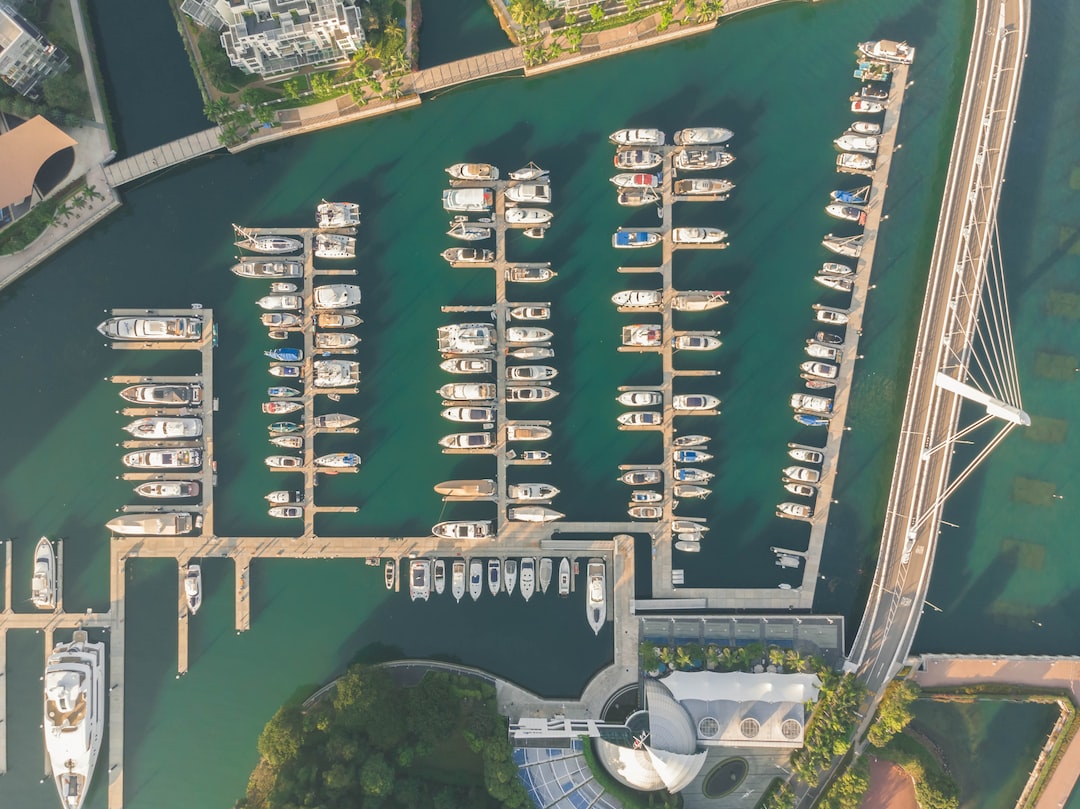
How fast is the hydrofoil catamaran?
Hydrofoil catamarans can reach impressive speeds, depending on various factors such as the design, wind conditions, and skill of the sailor. Some high-performance hydrofoil catamarans can exceed 40 knots (46 mph) or more. However, the exact speed will vary based on these factors.
How does a foil catamaran work?
A foil catamaran, also known as a hydrofoil catamaran, works by utilizing hydrofoils to lift the hulls out of the water. These foils generate lift as the boat gains speed, reducing drag and allowing for faster and smoother sailing. The lift created by the foils enables the catamaran to “fly” above the water, resulting in increased speed and improved performance.
What happened to hydrofoils?
Hydrofoils have a rich history and have been used in various applications, including passenger ferries, military vessels, and recreational boats. While hydrofoils experienced a surge in popularity in the mid-20th century, their use declined in some sectors due to factors such as high costs, maintenance challenges, and the development of alternative technologies. However, hydrofoils continue to be used in niche markets, including high-performance sailing and racing.
Read more about “… What is the World’s Largest Hydrofoil Boat?”
Are hydrofoil boats more efficient?
Yes, hydrofoil boats are generally more efficient than traditional boats. By lifting the hulls out of the water, hydrofoils reduce drag and allow the boat to sail faster while using less power. This increased efficiency translates to longer sailing distances and reduced fuel consumption. However, it’s important to note that the efficiency gains may vary depending on factors such as the design, sailing conditions, and skill of the sailor.
Hydrofoil catamarans offer an exhilarating and thrilling experience on the water. With their incredible speed, maneuverability, and stability, they have become a favorite among sailors and water sports enthusiasts. While they may come with a higher price tag and require some skill to master, the rewards of foiling on a hydrofoil catamaran are well worth it.
When choosing a hydrofoil catamaran, consider factors such as your skill level, intended use, budget, and the reputation of the brand. Take the time to research and test different models to find the perfect catamaran for your needs.
So, are you ready to take flight on a hydrofoil catamaran? Embrace the thrill, experience the freedom, and enjoy the incredible sensation of soaring above the water. Happy foiling!
- Hydrofoil History
- Advanced Hydrofoiling Techniques
- Hydrofoil Equipment Reviews
- Why do boats not use hydrofoils?
- iFLY15 – iFLY Razzor Pro – Foiling Catamaran
- Hydrofoil Catamarans on Amazon
- Hydrofoil Catamarans on Walmart
- Hydrofoil Catamarans on Etsy
Review Team
The Popular Brands Review Team is a collective of seasoned professionals boasting an extensive and varied portfolio in the field of product evaluation. Composed of experts with specialties across a myriad of industries, the team’s collective experience spans across numerous decades, allowing them a unique depth and breadth of understanding when it comes to reviewing different brands and products.
Leaders in their respective fields, the team's expertise ranges from technology and electronics to fashion, luxury goods, outdoor and sports equipment, and even food and beverages. Their years of dedication and acute understanding of their sectors have given them an uncanny ability to discern the most subtle nuances of product design, functionality, and overall quality.
Related Posts
Can you put a hydrofoil on any board [2024] 🏄♂️.
- March 13, 2024
Is Hydrofoil Harder Than Surfing? [2024] 🏄♂️
- March 3, 2024
Are Hydrofoil Boards Hard to Ride? [2024] 🏄♂️
Leave a reply cancel reply.
Your email address will not be published. Required fields are marked *
Add Comment *
Save my name, email, and website in this browser for the next time I comment.
Post Comment
Trending now

- Boat Reviews
- Retro Boats
- Digital Edition
- Competitions
BOAT REVIEW Roger Hill 18m Foil-assisted Power Cat Souvenir
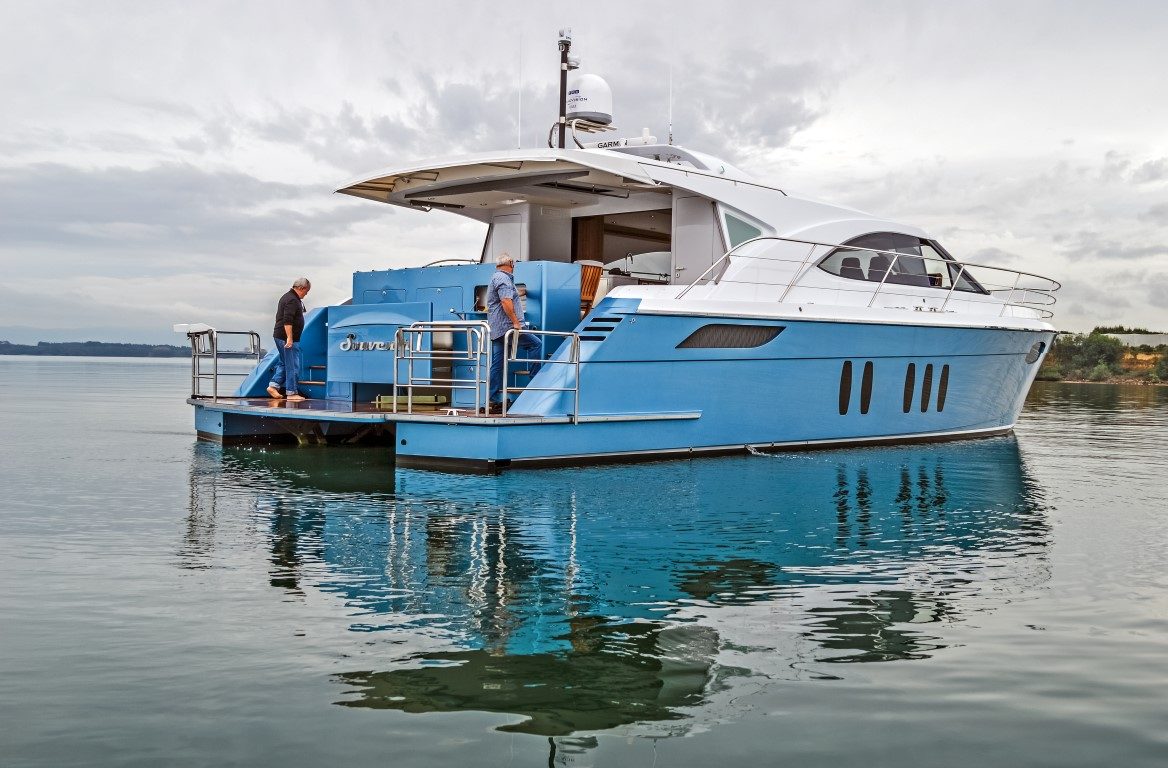
- Smooth and fast
- Luxuriously appointed
- Masses of space
- Joystick helming a breeze
- Massive range
- Huge range for ocean voyaging
Every new design from catamaran guru Roger Hill contains fascinating innovations. His latest vessel even has the wildlife talking.
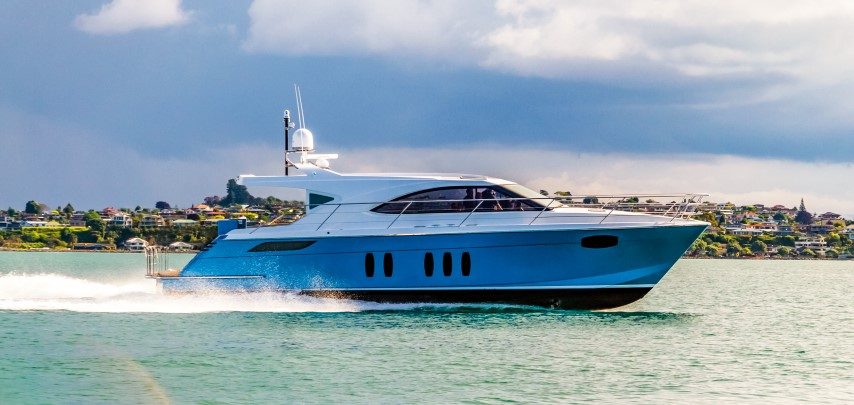
The channel markers whizz by like lamp posts on a motorway and the two blokes fishing mid-channel in a tinny become a navigation hazard which requires a decision well in advance of their rapid arrival. It keeps me on my toes and I am constantly scanning the chart-plotter and way ahead trying to anticipate a rapidly-moving scene. A short sortie out to sea and we get a taste of Souvenir ’s offshore capability. A slight left-over swell proves that the foil lets us down easy instead of slamming. Down swell the same applies with no decelerations as she overtakes the wave ahead. The Zip Wake trim system works well in conjunction with the foil to make high speed offshore work a possibility.It is not until later in the afternoon when I am left bobbing along in the OC Tender ready to take photos, that I realise just how impressive this craft is. Being buzzed by an 18m work of art going like the clappers is enough to give you a glimpse of the future. It’s also enough to get you talking to a potty-mouthed black-backed gull.

Seawind 1370
Solar panels on the vast roof help keep the batteries charged.
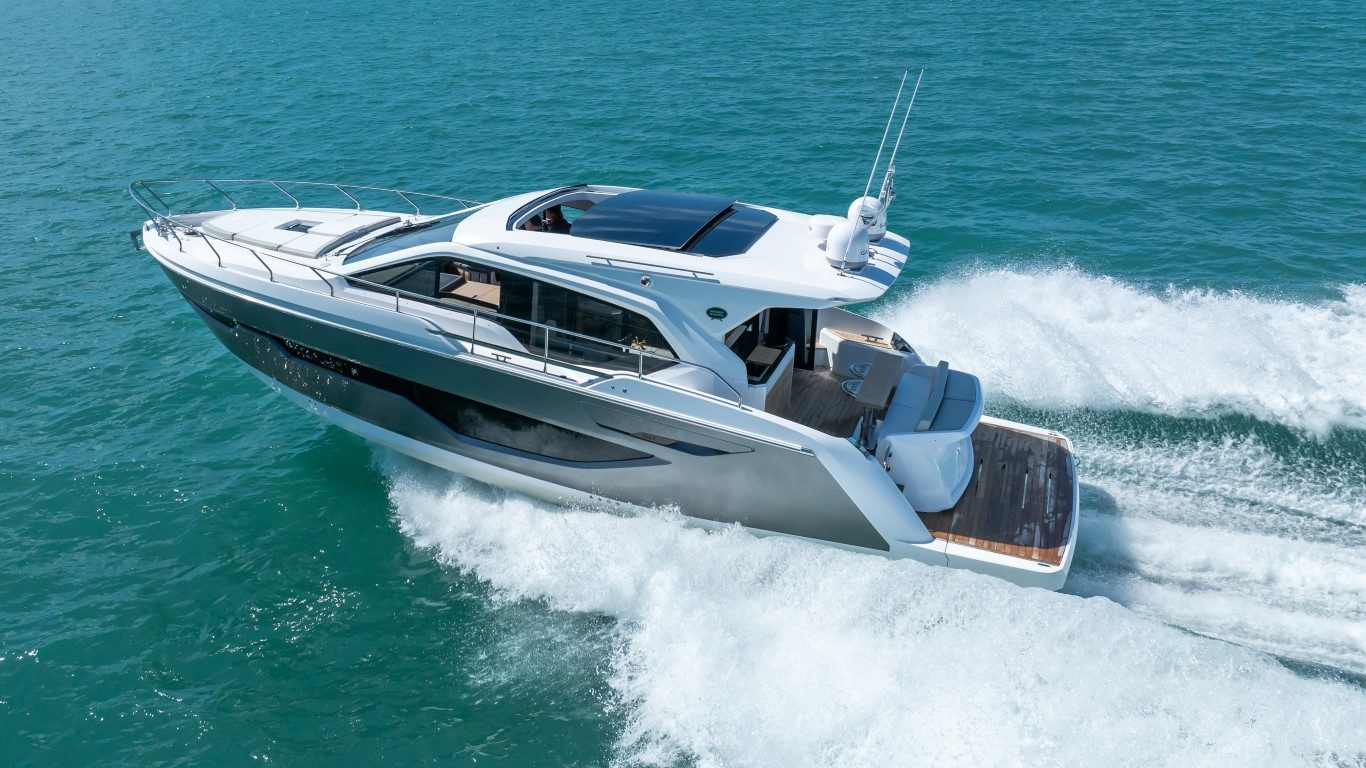
Sessa Yacht Line C47
Sessa vessels have a CE CLASS B rating – certified offshore to 200 miles, for winds up to force 8, and waves up to up to four metres high. Very capable, therefore.
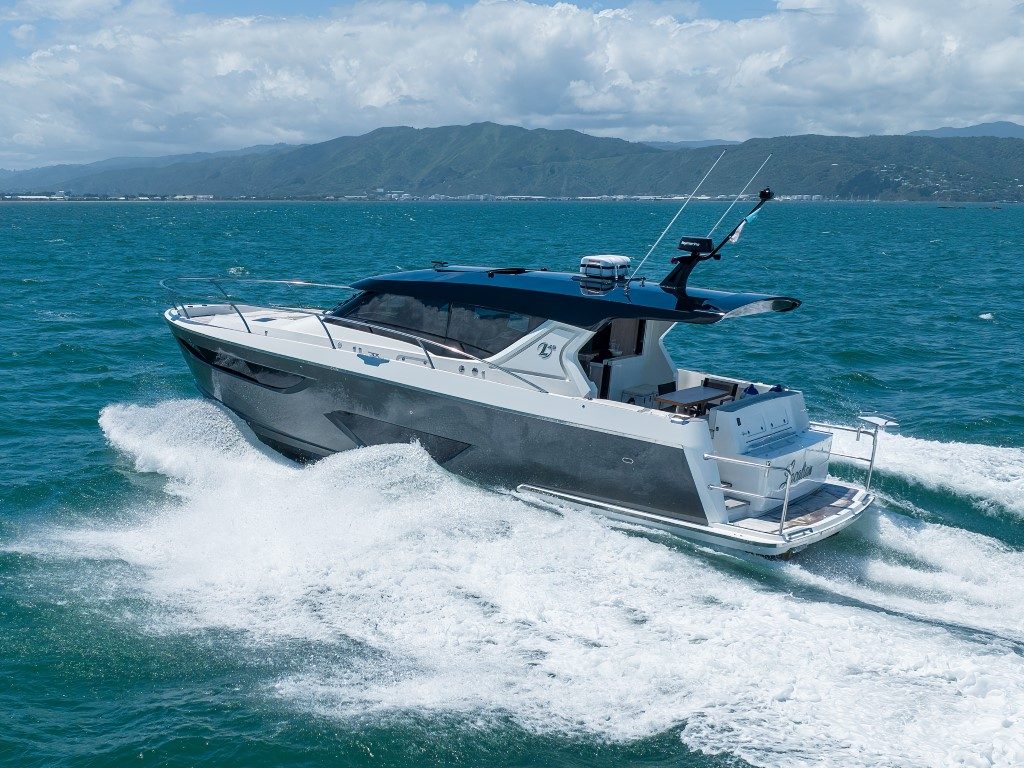
Legacy Marine L45
The L45 is intended to fulfil the role of a luxury motoryacht capable of operating in typical New Zealand coastal conditions.

Lazercat 950
The helm station is well-equipped and simple to operate, thanks to the simplified switching that’s been implemented.
New Hope 40: A Power Cat with Foils
At first glance, the Hope 40 looks like another Down East picnic boat, but with a slightly broken sheer line. But then take a look under the hull. It’s a state-of-the-art power catamaran with hydrofoil technology.
The new Hope 40 is the brainchild of McCullough Yachts in Newport, Rhode Island, and it’s going to be built at Front Street Shipyard in Belfast, Maine. On its website, McCullough says, “For years customers have asked us why existing power catamarans look like futuristic alien spacecraft.” They say their reply is the Hope 40, “an attractive vessel that still utilizes the smooth riding characteristics of a foil-assisted power catamaran.”
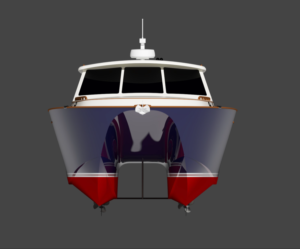
The main foil on the Hope 40 has an adjustable angle of attack and is fully retractable at the push of a button. The boat has two options for propulsion: twin 600-hp Mercury outboards, or twin 550-hp Yanmar diesels linked to Hamilton jet drives. The outboards offer high performance, while the inboard/jet drive offers reliability and safety, according to McCullough.
For accommodations, there’s a queen-sized berth in the bow, and a guest cabin with two berths a bit aft. The new cat has two heads, one with a separate shower. The galley is up on the bridge deck.
We don’t have more details yet, but we’ll be following the progress of this interesting new boat.
Specs.: LOA: 43’; Beam: 16’5”; Draft: 1’9”; Disp.: 18,000 lbs. Fuel: NA; Water: NA; Power: 2×600-hp Mercury outboards or 2/550-hp Yanmar diesels with Hamilton water jet drives. Read more:
http://mcculloughyachts.com
http://frontstreetshipyard.com
About Author
Related Posts

NOAA Outlook: Warmer Spring, Some Flooding

Princess Unveils New Flybridge 58 Cruiser

Heading Offshore? Rent an EPIRB from BoatUS
Leave a reply cancel reply.
Save my name, email, and website in this browser for the next time I comment.
- 2024 BOAT BUYERS GUIDE
- Email Newsletters
- Boat of the Year
- 2024 Freshwater Boat and Gear Buyers Guide
- 2024 Boat Buyers Guide
- 2024 Water Sports Boat Buyers Guide
- 2023 Pontoon Boat Buyers Guide
- Cruising Boats
- Pontoon Boats
- Fishing Boats
- Personal Watercraft
- Water Sports
- Boat Walkthroughs
- What To Look For
- Best Marine Electronics & Technology
- Watersports Favorites Spring 2022
- Boating Lab
- Boating Safety

Using a Hydrofoil to Improve Efficiency
- By Alan Jones
- Updated: July 15, 2021
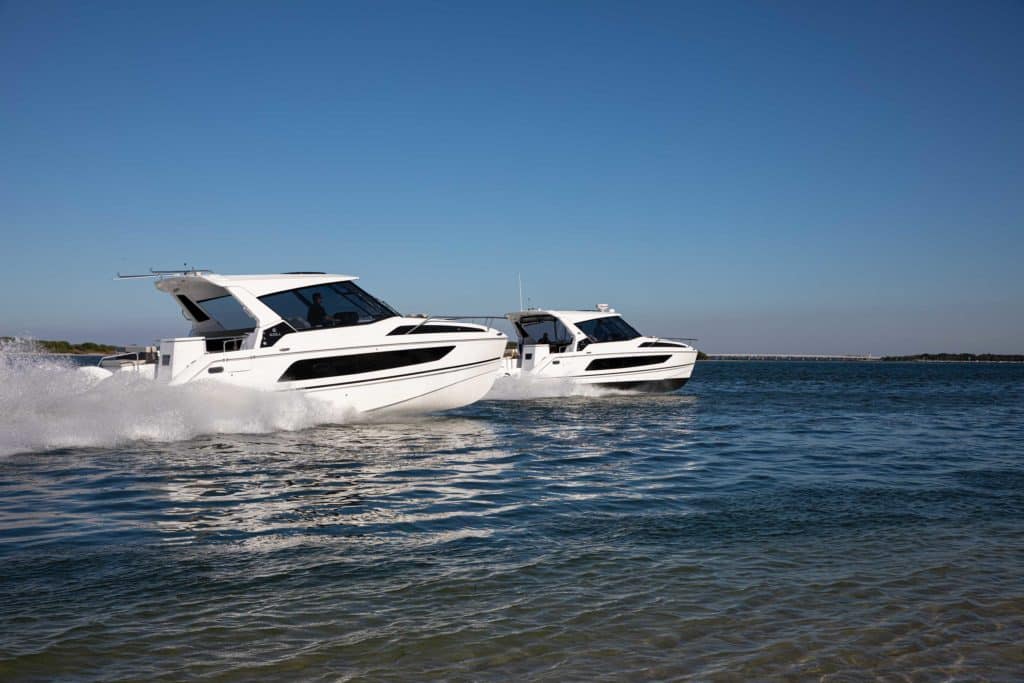
It’s hard to believe a piece of metal with no moving parts can be the approximate equivalent of adding 200 horsepower, 100 gallons of fuel and 100 miles of extra range. But when it’s a hydrofoil attached between the hulls of an Aquila 36 Sport power catamaran (above, far right), that’s the net effect.
While the efficacy of foiling boats is well-documented, this technology has surprisingly had little impact on the recreational powerboat market. Hydrofoils that lift a hull entirely out of the water seem to be too alien to most boaters. Plus, most foil designs require dynamic control using computers to remain aloft at a constant elevation. But they are proven to be effective. With the Aquila 36 Sport, we experienced its benefits on a recreational boat and compared it in real time to the same boat without a foil but with 200 extra ponies. Here’s what we found.
Hydro What?
Gino Morrelli and Pete Melvin, of Morrelli and Melvin Design and Engineering, applied their decades of foiling experience to design the Hydro Glide Foil System for Aquila. It consists of a main hydrofoil attached slightly aft amidships to each hull and the top of the tunnel. It lifts approximately 40 percent of the hull’s weight out of the water when at cruise speeds, for better performance and fuel economy. Farther back, twin fins act like an airplane’s horizontal stabilizers to prevent porpoising at higher speeds. What makes hydrofoils so effective is the dramatic reduction in drag. A typical planing hull has a 4-to-1 lift-to-drag ratio, while a hydrofoil can have up to a 25-to-1 lift advantage.
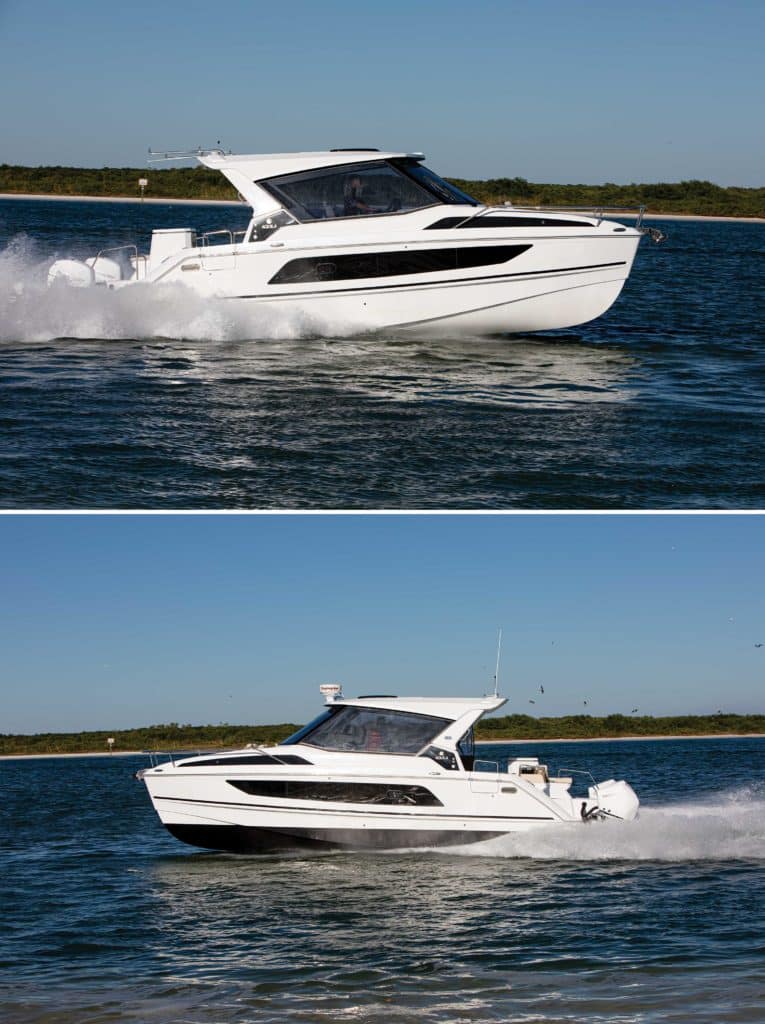
How does it work? The fields of aerodynamics and hydrodynamics are kissing cousins, so many of the principles of one apply to the other. The silhouette of a typical asymmetric hydrofoil wing wouldn’t look out of place on a 737. It consists of a convex curve on the upper side and a flatter bottom side. These taper down toward the rear. Bernoulli’s principle explains that when air or water rushes over the top side of a wing, the medium has to travel farther, so it moves faster. This creates lower pressure on top, allowing the higher pressure on the bottom to push upward.
Sir Isaac Newton’s third law also applies to hydrofoils. The simplified version says that for every action, there is an equal and opposite reaction. So, if a foil is directing the water down, it’s pushed back and the foil rises, creating lift. This effect is enhanced by an increased angle of attack at the leading edge to create more lift. In the case of Aquila’s Hydro Glide foil, it will still provide lift even if the boat’s bow is pointing down 3.5 degrees, which will be useful when running down-sea because it avoids transforming the hydrofoil into the equivalent of a down-planer or sea anchor.
Too much lift can also be a problem, according to Alain Raas, brand manager for Aquila Boats. “Because water is denser, a hydrofoil creates about 830 times more lift for the same area and speed compared to an airplane wing, so you can use a much smaller foil in water than air,” Raas says.
Most hydrofoils operate near the surface and can ventilate, which is a phenomenon that occurs when the low-pressure side of a foil pulls air from the surface and destroys lift on the foil, Raas explains. “Foil depth, sweep, dihedral and section shape all play a significant role in avoiding ventilation,” he adds.
Dueling Aquilas
We were able to arrange a test staging out of MarineMax in St. Pete Beach, Florida. MarineMax is Aquila’s exclusive distributor in the US. The Aquila brand is owned by the Sino Eagle Group, a high-tech Chinese builder that extensively uses vacuum-infusion technology to build the boats. J&J Design Group provided a complete design package for the Aquila 36 Sport.
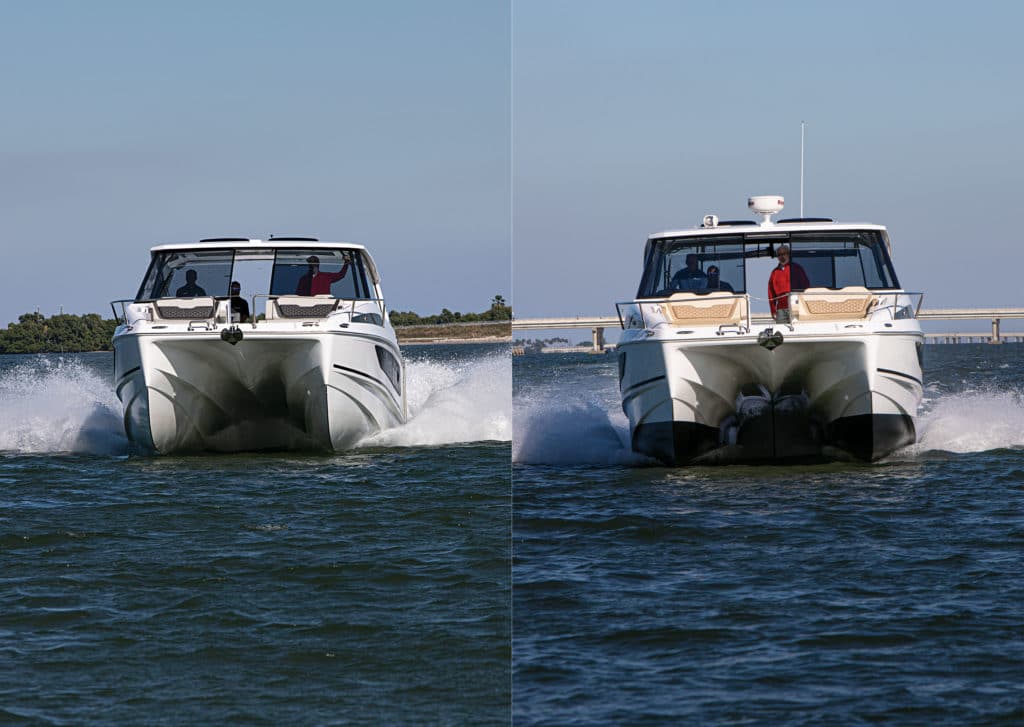
Aquila is largely the brainchild of Lex Raas, Alain’s father and president of Aquila at MarineMax. Lex is South African, and his career journey has taken him from working for Beneteau (the world’s largest boatbuilder) to the Moorings (the world’s largest vacation charter operation) to MarineMax (the world’s largest boat dealer). While a big believer in power catamarans for their roominess and comfort, Lex didn’t like that most were converted sailing vessels. The unveiling of the Aquila 36 Sport power catamaran in 2017, the company’s first outboard-powered model, ushered in a new era of high performance. Because these boats would be used on bareboat charters driven by skippers of varying degrees of expertise, they are purposely designed to be easy to pilot.
One Cool Cat
Our first sea trial began aboard the nonfoiled Aquila, joined by Alain Raas and Jacob Coyle, a MarineMax sales associate. When we headed out into the Gulf of Mexico through the Pass-a-Grille entrance, the wind was blowing 17 mph and gusting to 23 mph from the northwest, creating steep 4-foot waves. In other words, it was a glorious cat day.
Our nonfoiled test boat was powered by a pair of Mercury Verado 400 outboards derived from the Mercury Racing division. This engine does some serious overachieving given its smallish 2.6L inline-six-cylinder block, thanks to twin-scroll superchargers, which lend it substantial punch when a driver needs a blast of power. Ultra-rapid acceleration is less important for catamarans, which usually do best in rough water when kept at a steady speed that is faster than you would think.
Read Next: Aquila 36 Test
The big difference between most power cats and the 36-foot Aquila 36 Sport is the Aquila’s incredible 14-foot-7-inch beam, which creates a living room’s worth of space in the cockpit/salon for up to 26 passengers and is mostly enclosed by an optional hardtop. In addition to helping its optional Joystick Docking for Outboards system work more efficiently, this wide footprint creates an ultra-stable platform that will be reassuring to those without sea legs (or stomachs). It’s so stable, according to Alain, no customers have ever asked Aquila to install a Seakeeper gyrostabilizer.
Settling into a cruise speed of 33 mph felt like the cat’s happiest velocity for that sea state. The narrow profile of the twin hulls cleaved the water without the pounding that characterizes most monohulls when running into steep waves. We used a little bit of engine trim to bring the bow of the hulls out of the water to reduce drag and prevent bow steering, and the boat offered a smooth ride, even when we turned the beam to the waves. Narrower cats of similar lengths can snap-roll alarmingly in large beam seas, but the Aquila remained surprisingly level.
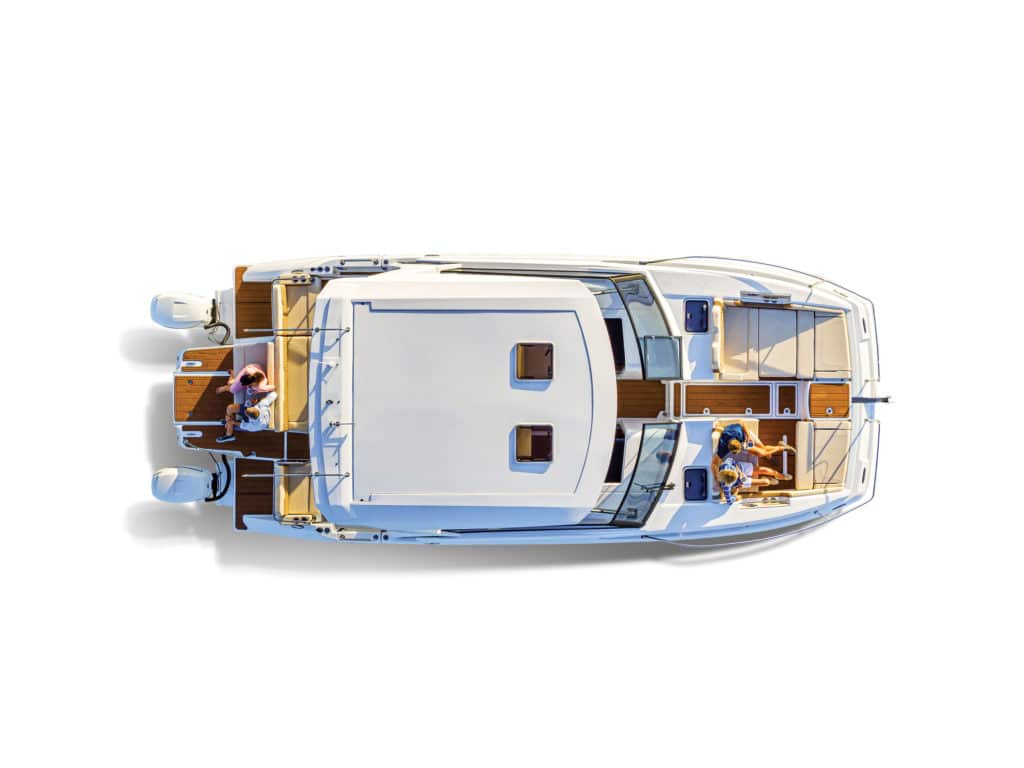
Heading into Bunces Pass is tricky because of shoaling on each side, but once through, it put us squarely into the Tampa Bay area’s recreational boating epicenter. With Egmont Key State Park and Fort De Soto Park to starboard and Shell Key Preserve to port, we were surrounded by great beaches that are perfect to nose up to. The Aquila 36 Sport Hydro Glide showed off its ability to float in just 2 feet of water with the engines trimmed up as we beached it. We beached the foil boat too. Even though the bottom of the foil is about a foot lower than the hulls, its extruded aluminum construction is stout enough to withstand being gently beached.
Time to Fly
Switching boats, we were curious to feel the difference the foil makes. The experience was subtle. The Hydro Glide foil is positioned just forward of the boat’s longitudinal center of gravity and set at zero degrees of attack, allowing the driver to use engine trim to increase the angle for optimal lift. On this boat, little trim is needed because the optimal angle of attack of the hydrofoil is only about 1.5 degrees, according to Lex. In our case, because the fuel tanks were almost full, we just trimmed the engines to their neutral position and let the weight of the fuel give the Aquila 36 Sport Hydro Glide its proper bow-up angle.
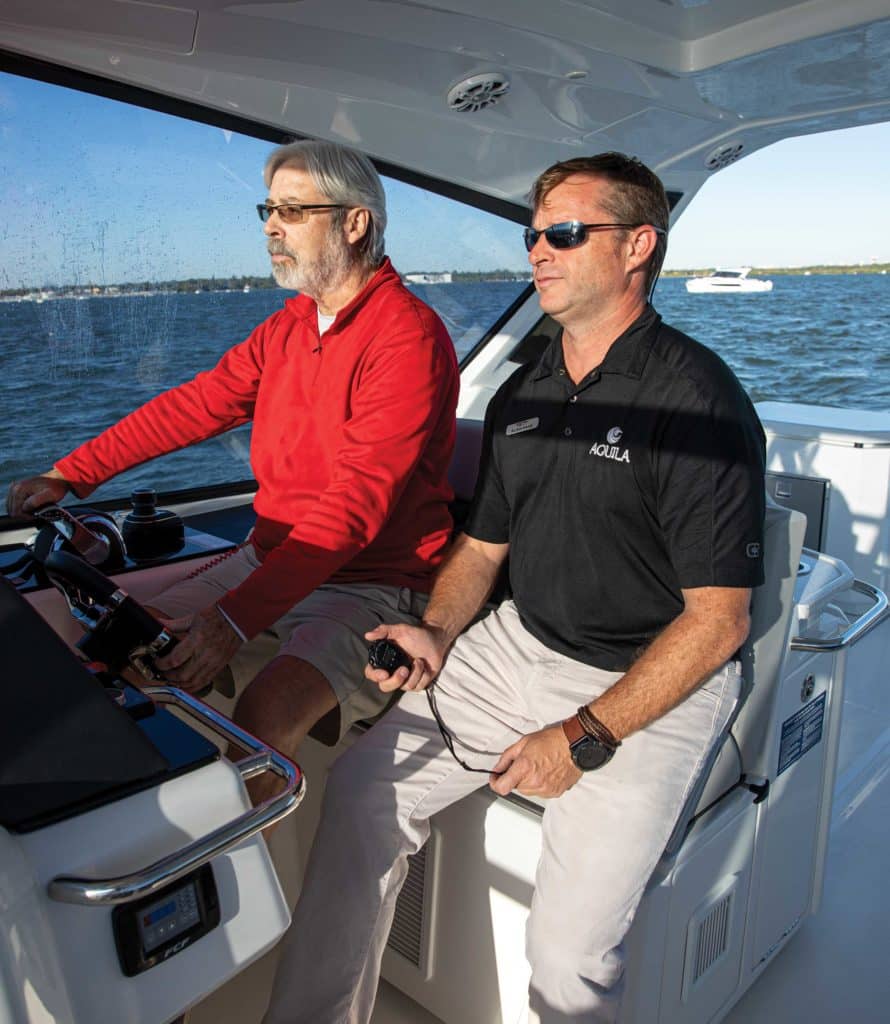
Because the Hydro Glide Foil System lifted the hull only about 6 inches, there was a general feeling of riding higher in the water, but the most tangible evidence was how the steering felt lighter and more responsive—an indication that the foil is running at its proper angle of attack. The wake behind us flattened out significantly, unlike the tall rooster tail and wake that shot aft from the nonfoiled boat. Offshore, it handled the steep chop well and felt best at a cruise speed of 38 mph. There was never a moment when it lost its lift from the foil.
Another difference lay in the cornering characteristics. Without the foil, the 36 Sport has a slight lean to the outside, which some find off-putting. With the Hydro Glide foil, the cat leaned slightly inward and felt nimbler as it carved hard turns. A driver can overcook it during extremely hard turns—the hulls can dig in and turn more sharply than expected—so whipping it into a corner like it’s a jet boat isn’t advised.
Foils that raise a boat’s hull entirely out of the water can plummet should the boat lose lift. But the dihedral V-shape of the Aquila’s foil allows it to descend a little at a time when exposed above the water. This results in gentle corrections in heave, or a boat’s up-and-down motion.
The Numbers Don’t Lie
The Aquila 36 Sport Hydro Glide reached plane in 6.4 seconds, which was 1.4 seconds faster than the nonfoiled boat. Its zero to 30 mph time was 2.4 seconds quicker, taking 12.4 seconds. While those might sound like modest gains, remember this test boat had twin 300 Mercury Verado engines—200 fewer horses than the nonfoiled boat. Of course, these 300s are the new-generation Mercury V-8 engines, featuring 4.6L in a naturally aspirated design instead of the 400′s 2.6L twin-supercharged powerplant. Having two more cylinders and 2 liters of increased displacement negates the need for supercharging because big blocks inherently have more low-end torque.
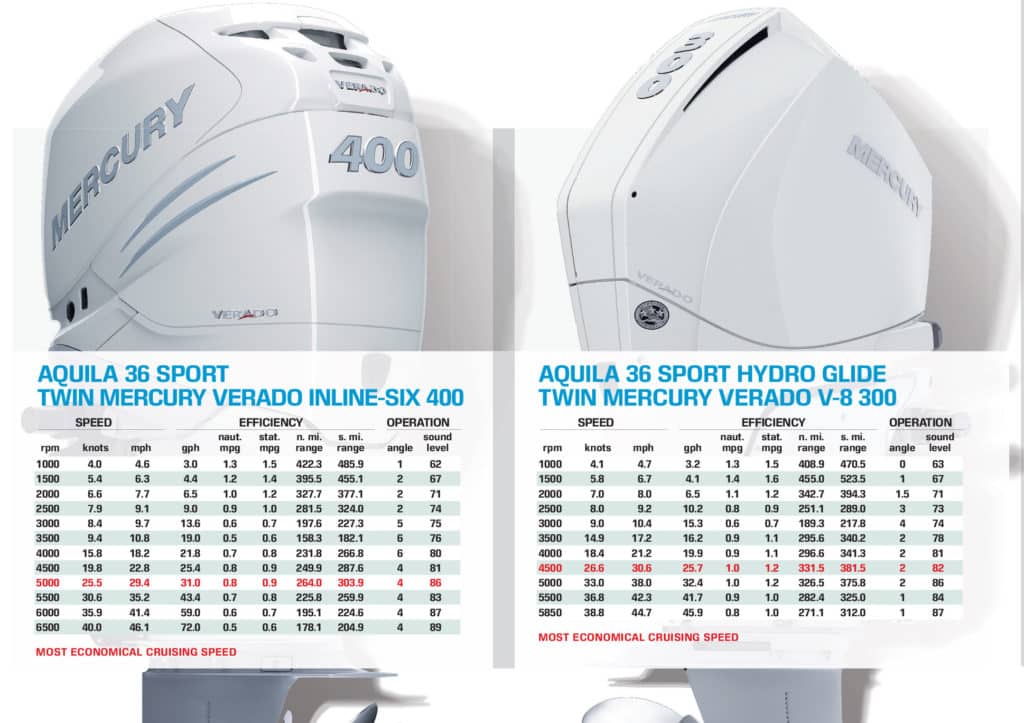
Most impressive was the lack of penalty for going fast on the 36 Sport Hydro Glide. Even at its top speed of 44.7 mph, it was still getting nearly 1 mpg, and the effect on its range was dramatic. At that speed with a full 356-gallon tank, we could theoretically travel the 322 miles from St. Pete Beach to Havana, though exceeding our 10 percent reserve. The nonfoiled Aquila 36 Sport, traveling at its top speed of 46.1 mph, would fall well short of reaching Key West (231 miles away) with a full tank. At its best cruise speed of 30.6 mph, the hydrofoil-equipped Aquila can go 381.5 miles, compared to the nonfoiled version’s 303.9-mile range, when traveling at 29.4 mph, factoring in a 10 percent reserve.
At first blush, opting for the Hydro Glide Foil System might cause sticker shock with its $32,452 price tag, which equates to running through about 13,000 gallons of fuel at $2.50 per gallon to recoup the investment. But if you factor in the difference in buying a pair of 300s versus 400s, the price is much closer, and you get a better-handling boat with more capability because of its increased range. Aquila 36 Sport owners will be happy to discover the Hydro Glide Foil System can be retroactively fitted at an estimated additional labor cost of $10,000. Twin 300s are the max power with the foil because higher speeds cause cavitation, which then adds drag. But the improvements in ride, acceleration and range make this the biggest no-brainer on the options list.
- More: Aquila , Boats , Cruising Boats , versus
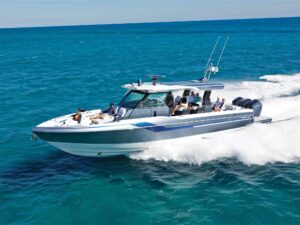
Boat Test: 2024 Formula 457 CCS
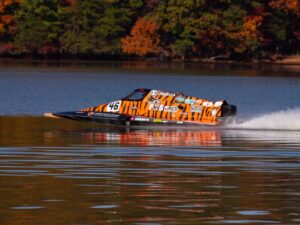
A New Electric-Powered-Boat Speed Record
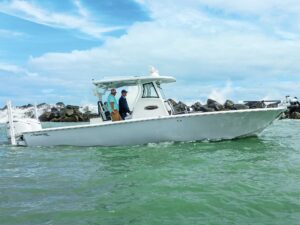
Boat Test: 2024 Tidewater 3100 Carolina Bay
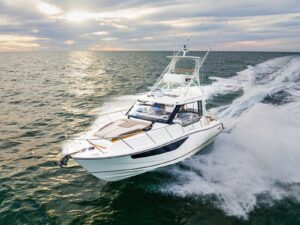
Boating On Board: Boston Whaler 365 Conquest
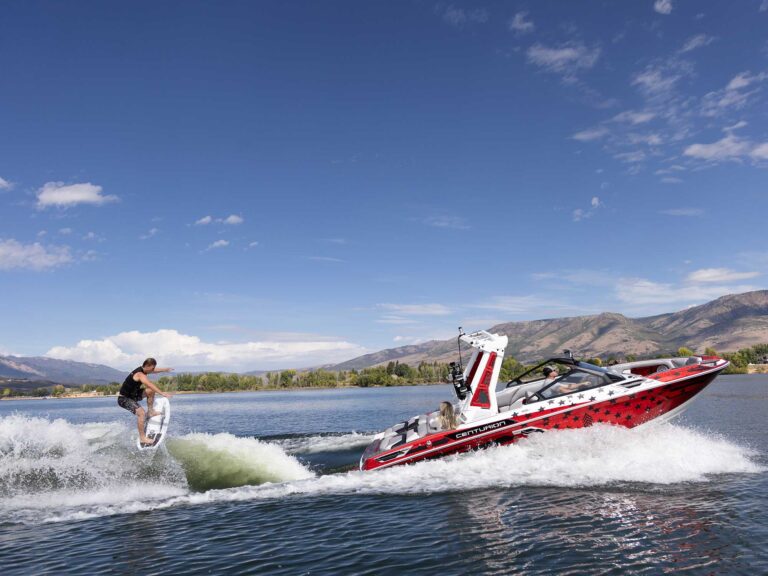
Tips for Shaping the Perfect Wake
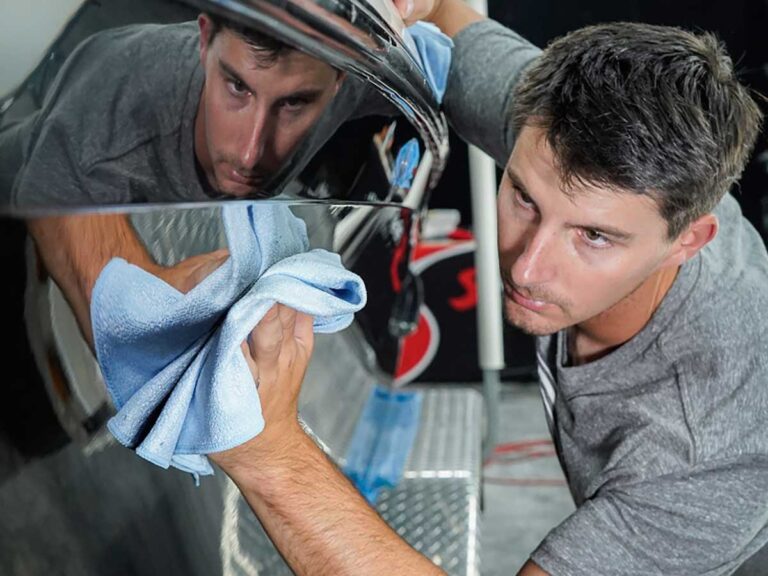
Eight Tips for Waxing Your Boat
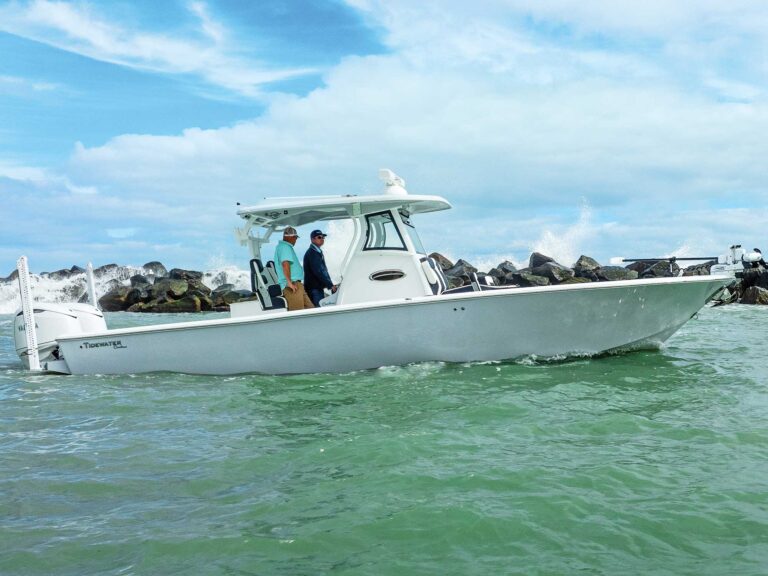
- Digital Edition
- Customer Service
- Privacy Policy
- Cruising World
- Sailing World
- Salt Water Sportsman
- Sport Fishing
- Wakeboarding
Many products featured on this site were editorially chosen. Boating may receive financial compensation for products purchased through this site.
Copyright © 2024 Boating Firecrown . All rights reserved. Reproduction in whole or in part without permission is prohibited.

IMAGES
VIDEO
COMMENTS
The Foil Cat holds 400 gallons of fuel and with twin Mercury 400 Verado engines, has a 600-700-mile range, cruising at an easy 32 mph. That horsepower and speed provides an economical 2 mpg burn. The amidship location of the 28" foils come into play as the boat planes, balancing the amount of boat in the water, both foils and propulsion units ...
His latest project is a 29' (8.8m) foil-assisted planing cruising power catamaran designed for twin outboards from 60 hp to 90 hp. Last fall, construction was far advanced as Brandt prepped for finishing, outfitting, and getting the boat ready for sea trials off St. Augustine, Florida, where he set up shop as Matanzas Watercraft LLC.
We contacted a Naval architect, who designed several successful foiling power cats. He is now a member of our technical staff. Our 35 "foiling cat" design has set the standard for Foil-Assisted Sportfishing boats. ... The Premier Internal Foiling Catamaran! Insetta 35IFC. 1. Integrated 36 Gallon Livewells & 625 QT Coffin Box Standard ...
St. Pete Boat Show - (Jan 19 - 23, 2023) Miami International Boat Show - (Feb 15 - Feb 19, 2023) Palm Beach Boat Show - (Mar 26 - Mar 29, 2023)
The key benefits of partial or complete foil support are sea kindliness and fuel efficiency so both are of interest to owners of 32'10" to 78'9" (10 m to 24 m) motor boat. Generally this is why we have either specified or retro-fitted assist foils on a number of catamarans we have been involved with in the past.
An advanced hydrogen fuel cell that can generate enough juice to power twin 295-horsepower electric motors—and take this 33-foot cat over 100 miles at a 40-mph cruise speed. Team New Zealand ...
Buy This Yacht: https://www.yachtworld.com/boats-for-sale/make-custom/model-vandal-explorer/Join YachtWorld and boat reviewer Marilyn DeMartini for a full ...
Above: 2023 Fountaine Pajot Power 67 Catamaran main salon. Photo by Fountaine Pajot. The FP Power 67 is all about space and this model will be ideal in luxury charter as well as with owner's who like to entertain. The aft cockpit includes 388 square feet of space, room for 10 to dine together, a plancha grill, and a curved staircase that ...
McCollough Yachts, based out of Newport, Rhode Island, is launching the Hope 40, a power catamaran that boasts hydrofoil technology. With an overall length of 43 feet, the 40 brings classic New England styling to a new foiling package. Because a foil between hulls can be a liability in some sea conditions, the 40's foil is fully retractable.
Sunreef Yachts, well known for their top quality luxury catamarans have just announced the launch of the company's very first foiler: The 60 knot + Sunreef Yachts 40 Open Power. The ultimate Riviera style hyper speedster. Since the 40 Open Power's first introduction at the Cannes Boat Show in 2014, the company's design department ...
The Aquila Hydro Glide Foil System™, designed by catamaran and foil specialists Morrelli & Melvin Design & Engineering, is available as an option on the extremely popular Aquila 36 Sport as well as the Aquila 42 Yacht.It enhances the performance, consumption, and handling of the already spectacular performance of these two power catamarans.
Rapido Catamarans' 40' (12.2m) Foiling Cat, designed by world-acclaimed naval architects, Morrelli & Melvin, ... Foiling power cats are so special because they result in a huge increase in both performance and fuel economy and also offer a better sea ride. MM claim that with similar foils, total efficiency gains of 50% or greater are possible.
Technical details. The F1x A-class foiling catamaran has a number of unique features that improve performance. For example: Semi ridged trampoline. Gives extra torsional stiffness to the boat and increases its aerodynamic characteristics. Patented main-sheet-wheel-system. For more direct and faster trim of the main sail.
Join boats.com and Marilyn DeMartini in Cape Canaveral Florida along with Tarpon River Boatworks CEO Todd Meyer for a full walkthrough video tour and review ...
Learn More About Aquila: http://bit.ly/34dmmUoAquila Power Catamarans introduces our latest innovation and technological marvel - the Aquila Hydro-Glide Foil...
Facts About Powercat Foils. Engineer Andre Moltschaniwsky of Lomocean Design looks at the question of foiling in power boats, a subject that has been brought to the front so graphically with the recent America's Cup AC72s. It is fair to say that by now, most people out there with any kind of interest in boats at all will have a pretty good ...
Hydrofoil catamarans can reach speeds of up to 40 knots (46 mph) or more, depending on the design and conditions. The foils on a hydrofoil catamaran can lift the hulls out of the water, reducing drag and allowing for a smoother and faster ride. Hydrofoil catamarans are used for various purposes, including racing, recreational sailing, and even ...
In 2013, the world sat up and took notice of foiling boats mostly due to the much-promoted America's Cup. The AC72 catamarans flew across our TV screens with great speed and grace, hardly touching the water. These high-priced models achieved 40 knots in 17 knots of breeze with their T-shaped rudders and L-shaped daggerboards and in the ...
BOAT REVIEW Roger Hill 18m Foil-assisted Power Cat Souvenir. Words by Matt Vance. Photos by Matt Vance and supplied. Every new design from catamaran guru Roger Hill contains fascinating innovations. His latest vessel even has the wildlife talking. In the distance over by the port of Tauranga is a black dot.
New Hope 40: A Power Cat with Foils. At first glance, the Hope 40 looks like another Down East picnic boat, but with a slightly broken sheer line. But then take a look under the hull. It's a state-of-the-art power catamaran with hydrofoil technology. The new Hope 40 is the brainchild of McCullough Yachts in Newport, Rhode Island, and it's ...
It's hard to believe a piece of metal with no moving parts can be the approximate equivalent of adding 200 horsepower, 100 gallons of fuel and 100 miles of extra range. But when it's a hydrofoil attached between the hulls of an Aquila 36 Sport power catamaran (above, far right), that's the net effect. While the efficacy of foiling boats ...
But as reported in Power & Motoryacht' s July 2018 issue, the builder's new 90-footer sports a foil—a 14-foot wing slung beneath the hull, to add lift and increase top speed to a barely believable 50 knots. Tests of a fixed protoype foil made of aluminum and carbon were apparently successful; now the plan is to design a retractable version.
The Evolution of Power Catamarans. A veteran marine journalist reflects on how fast power cats have evolved over the last few decades. ... I gave my first foiling power cat a whirl in 2004 on a beautiful opalescent stretch of Road Harbor, Tortola, in the British Virgin Islands. Robertson & Caine, a South African catamaran builder in partnership ...